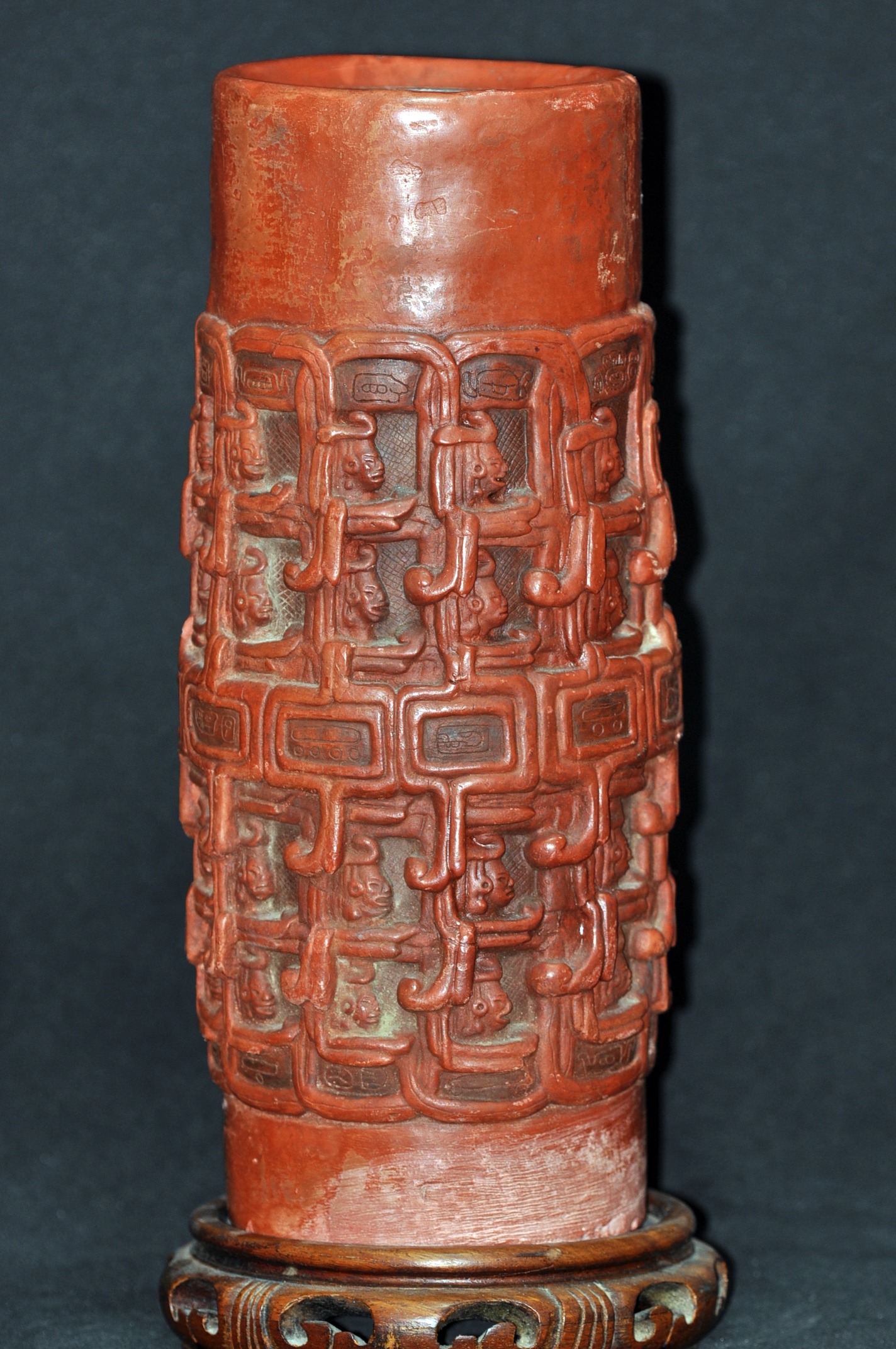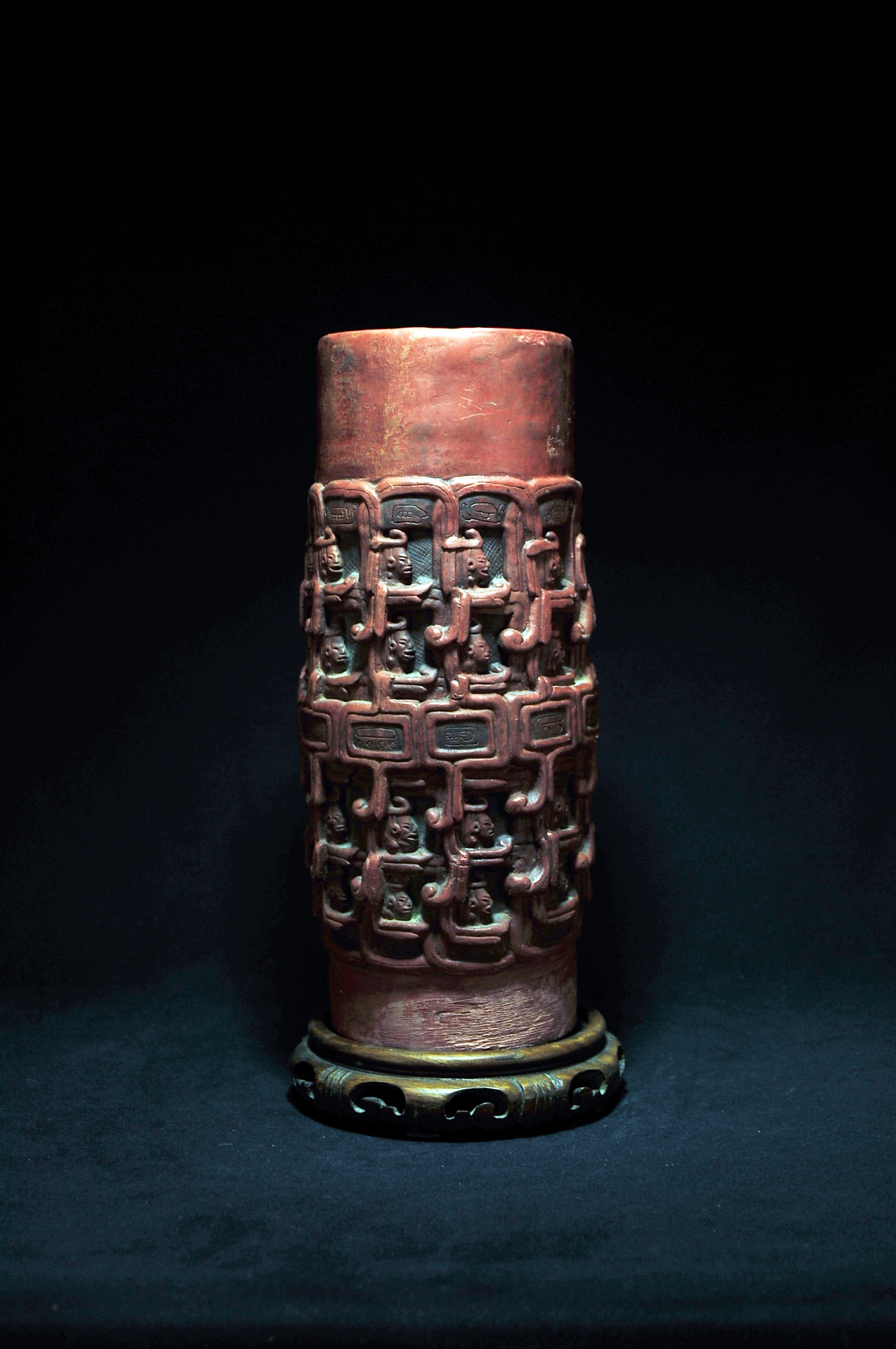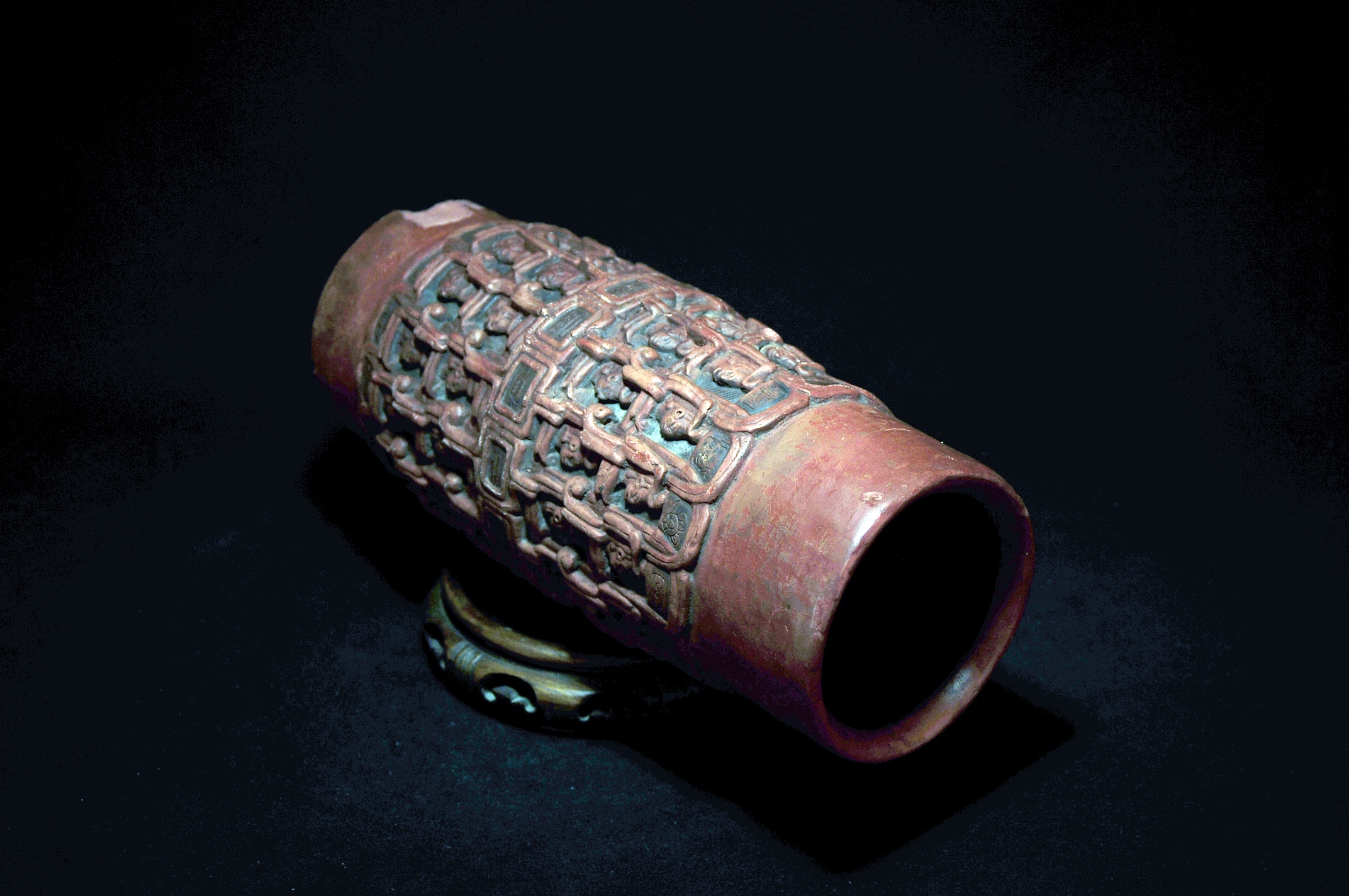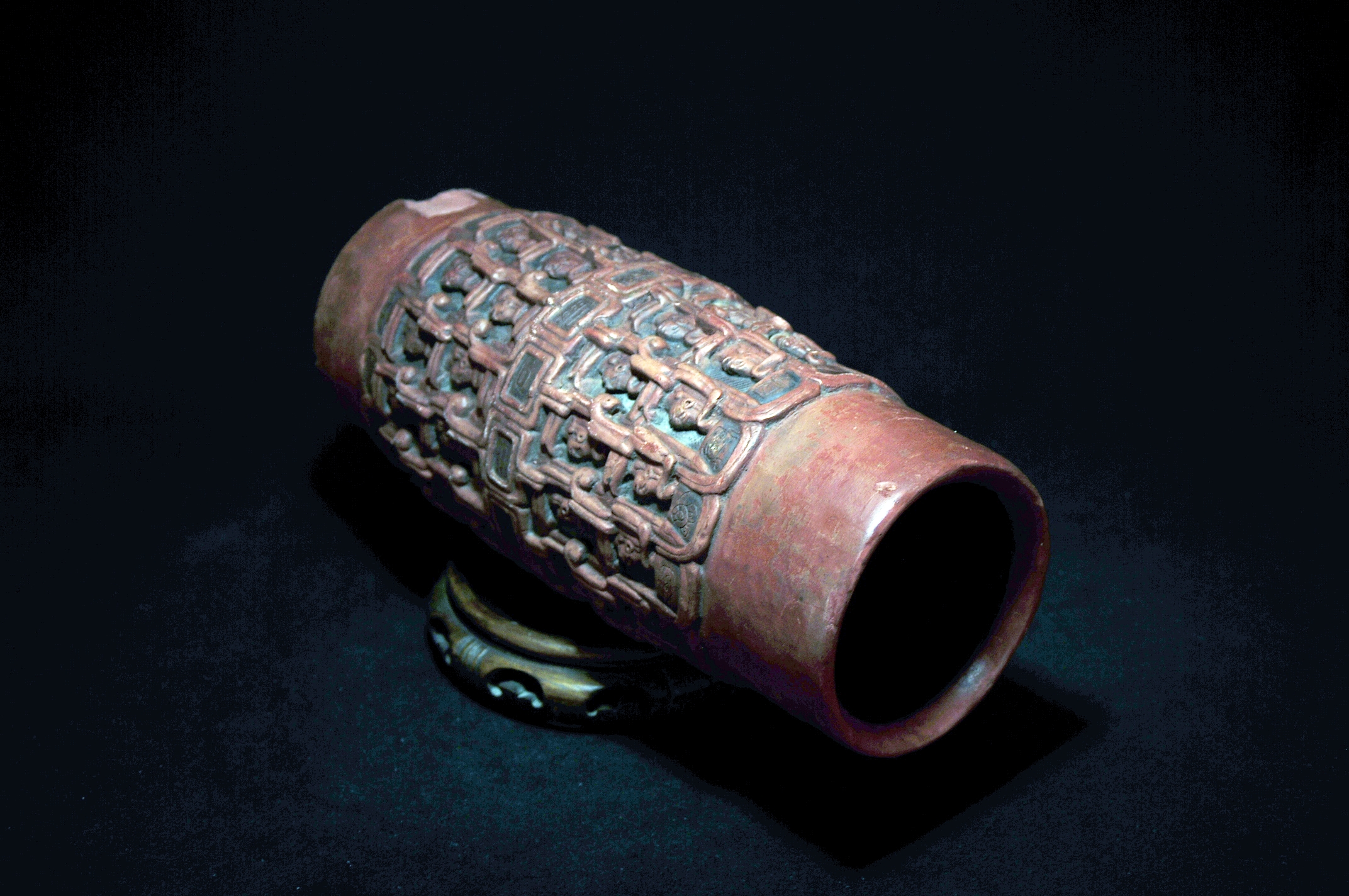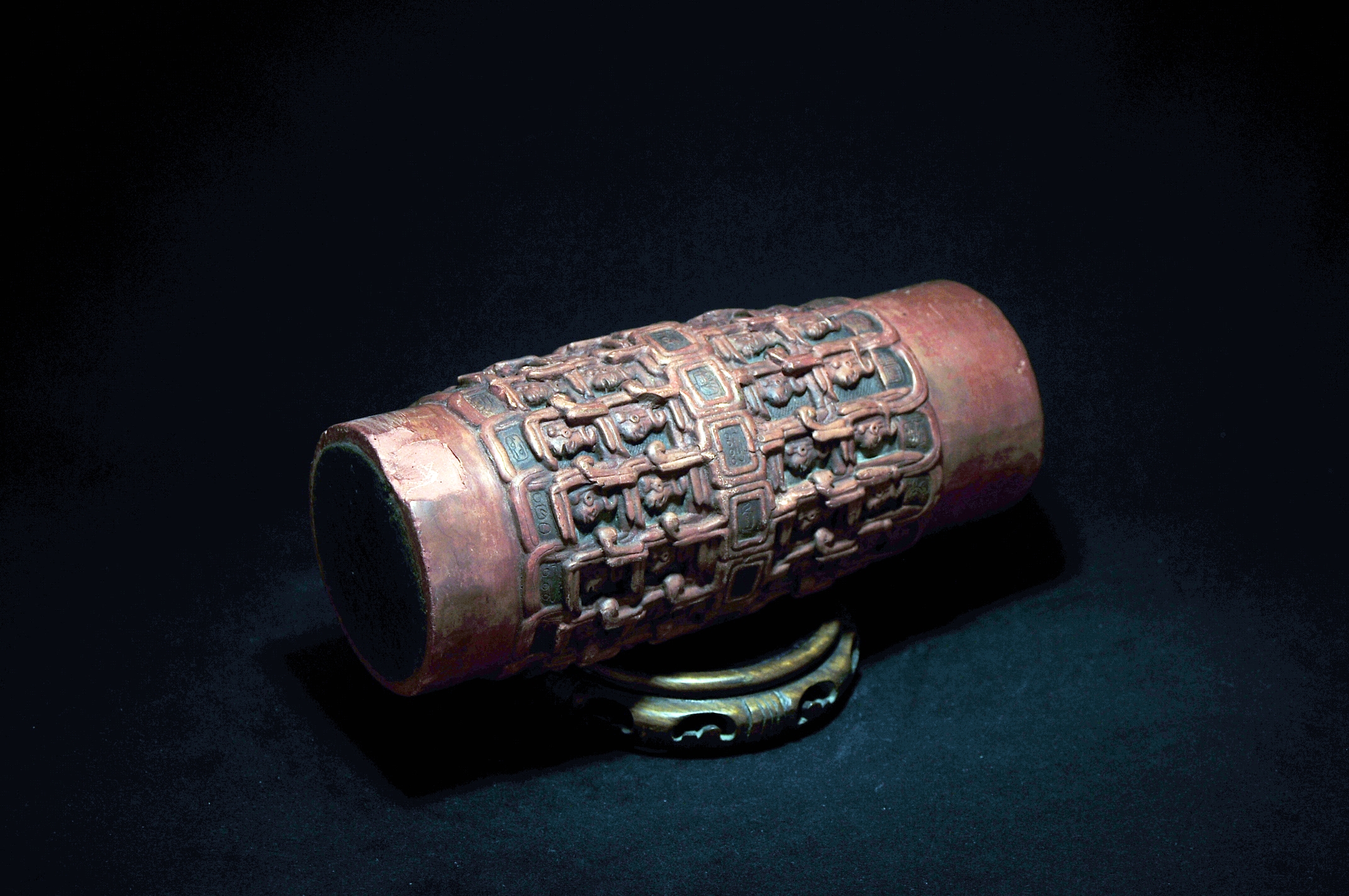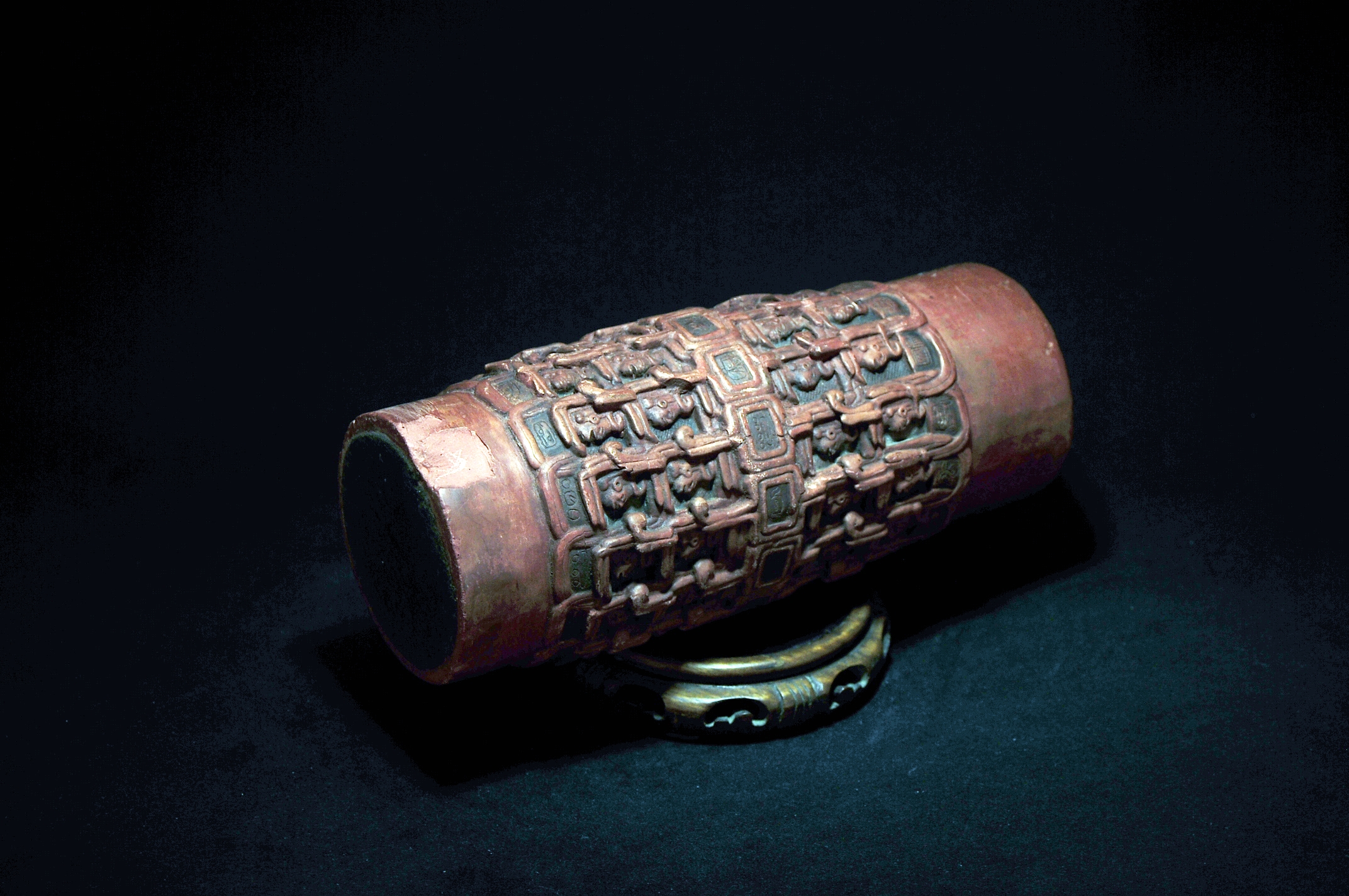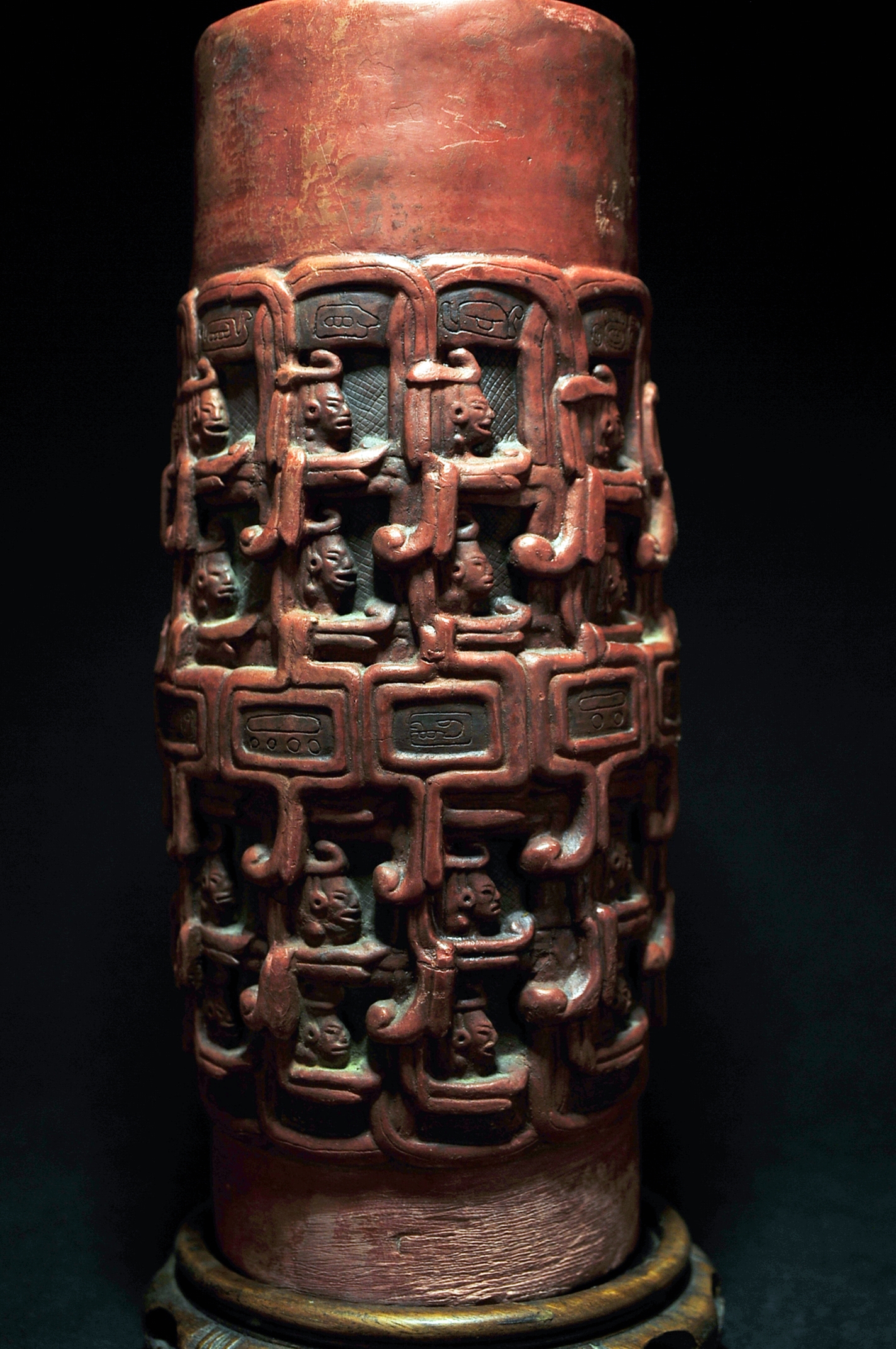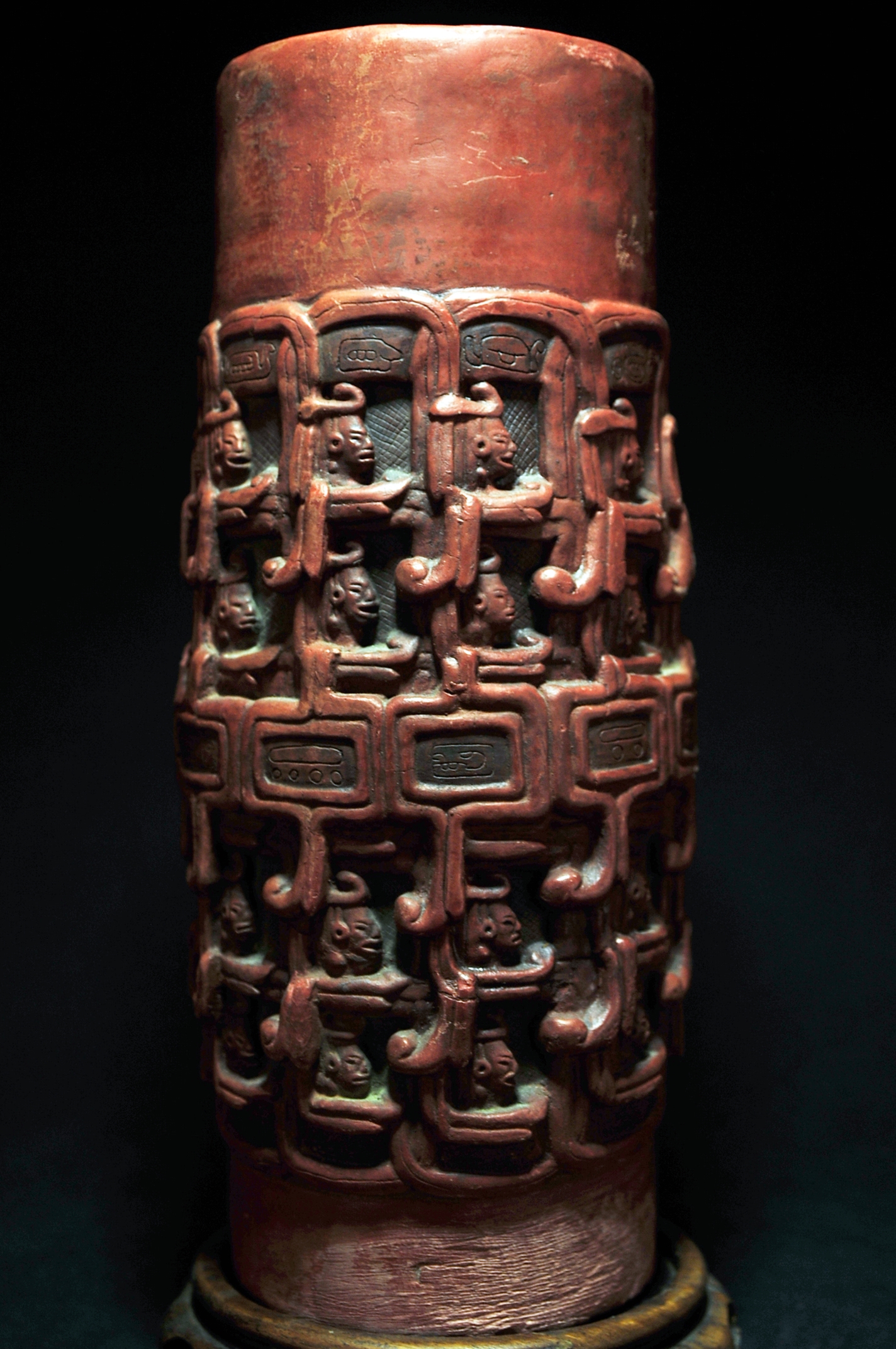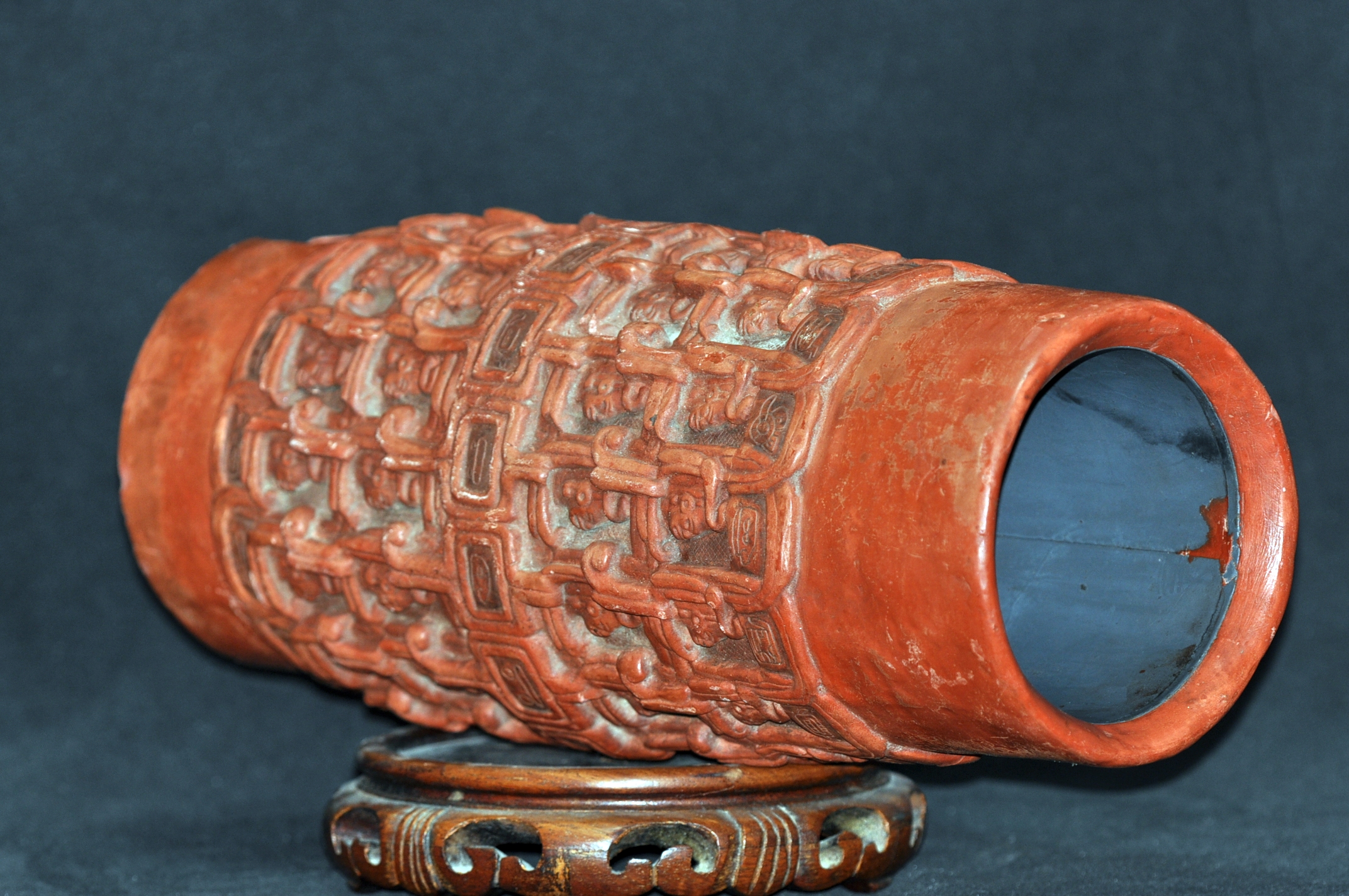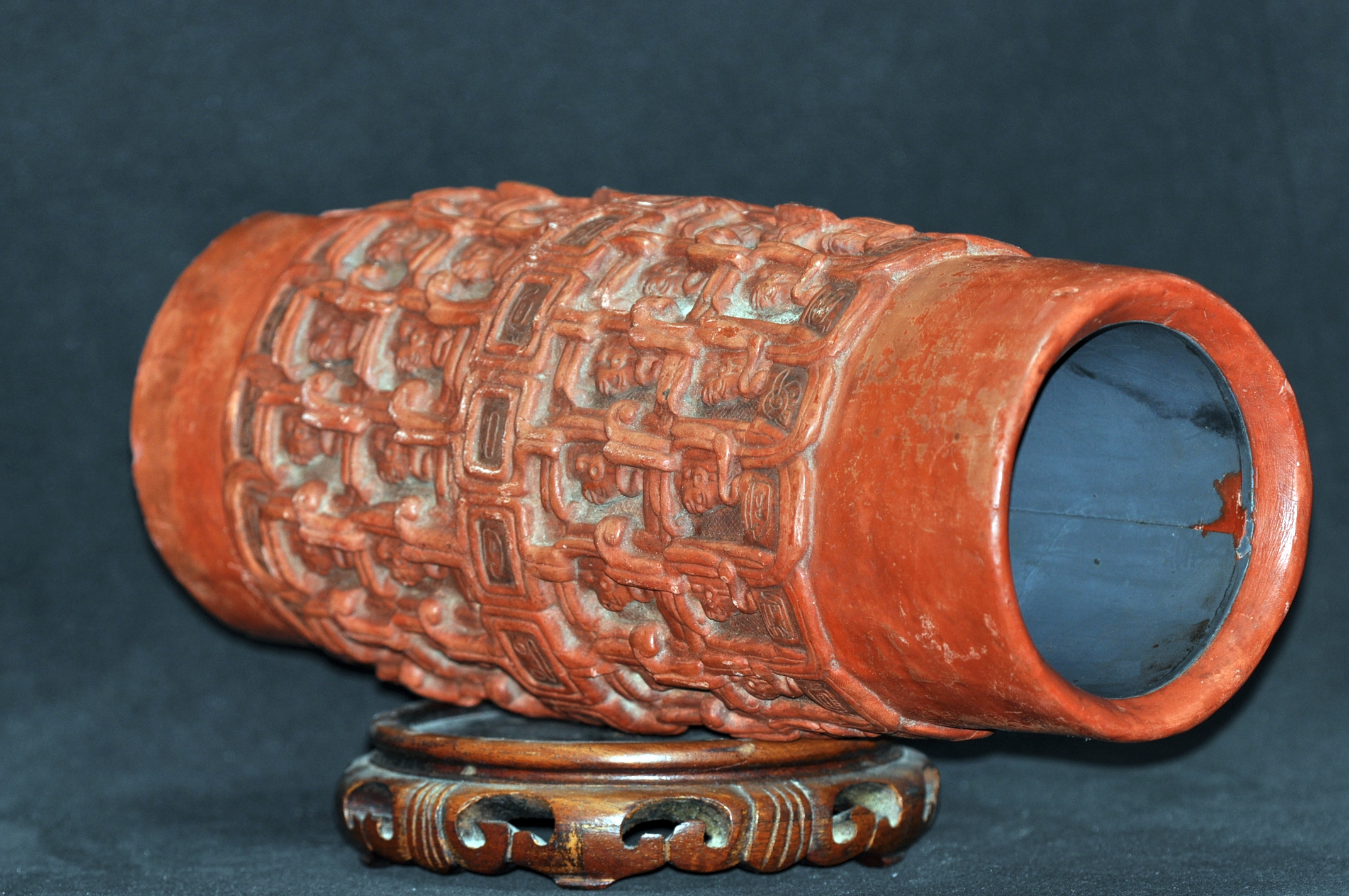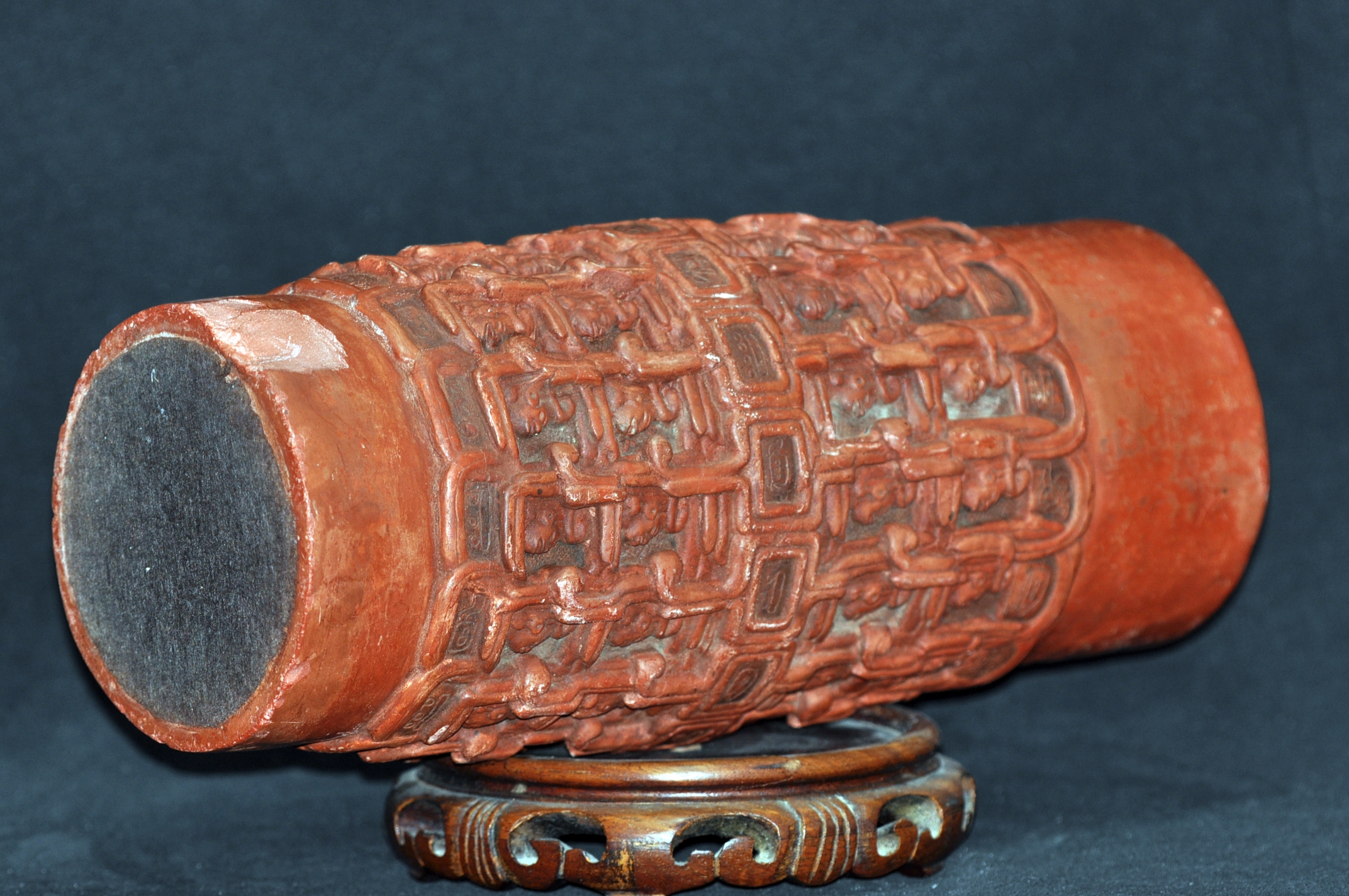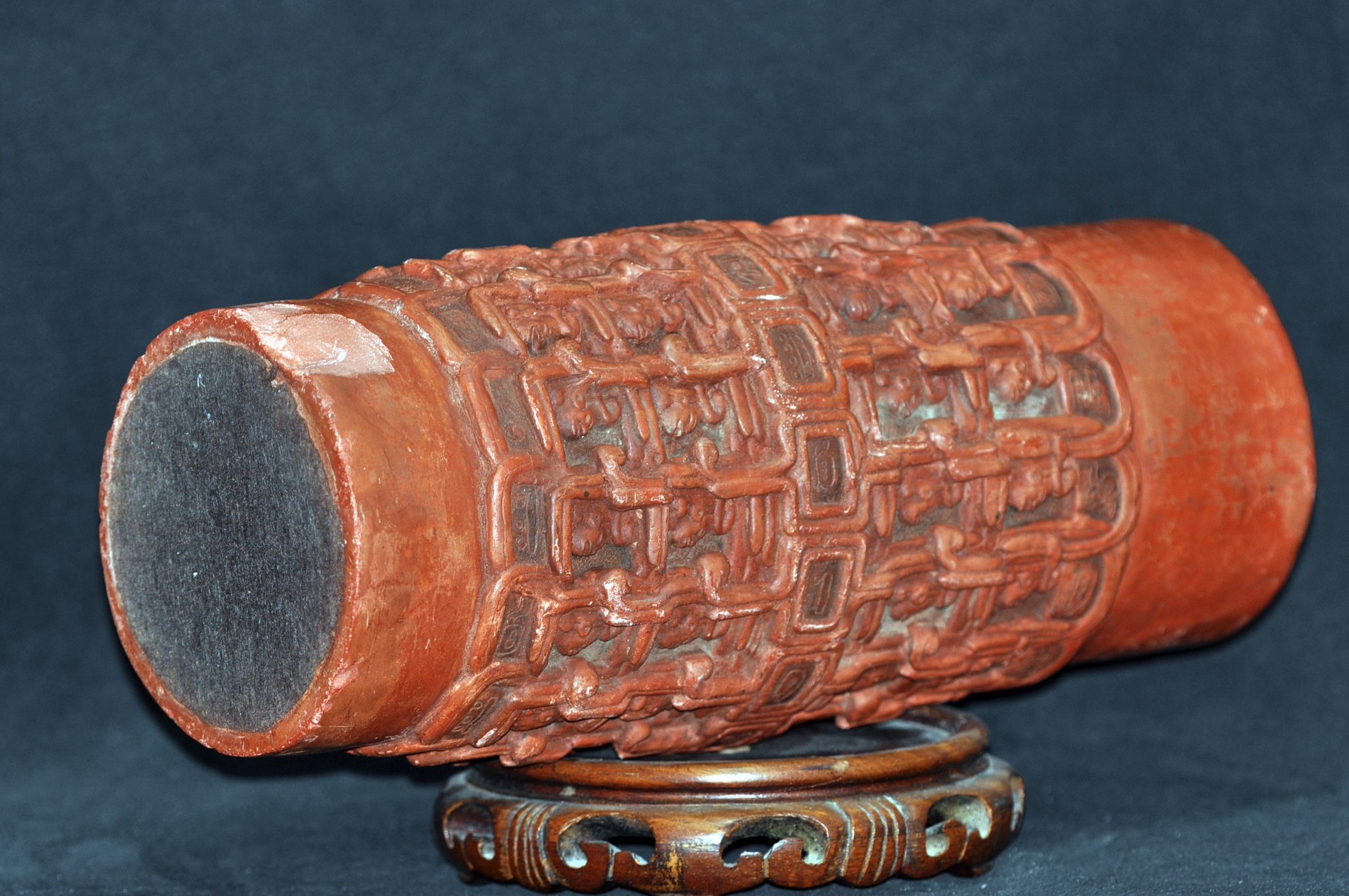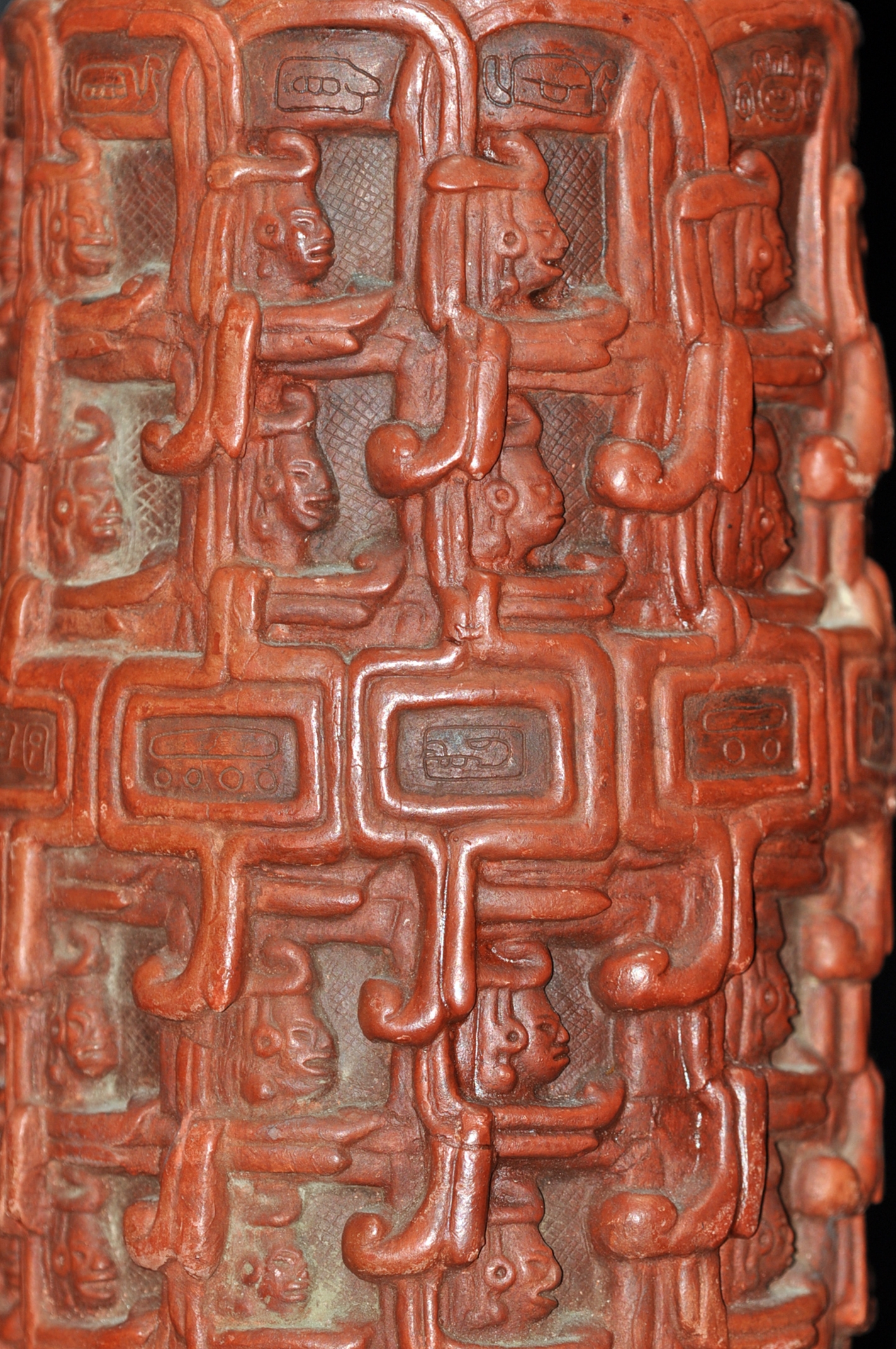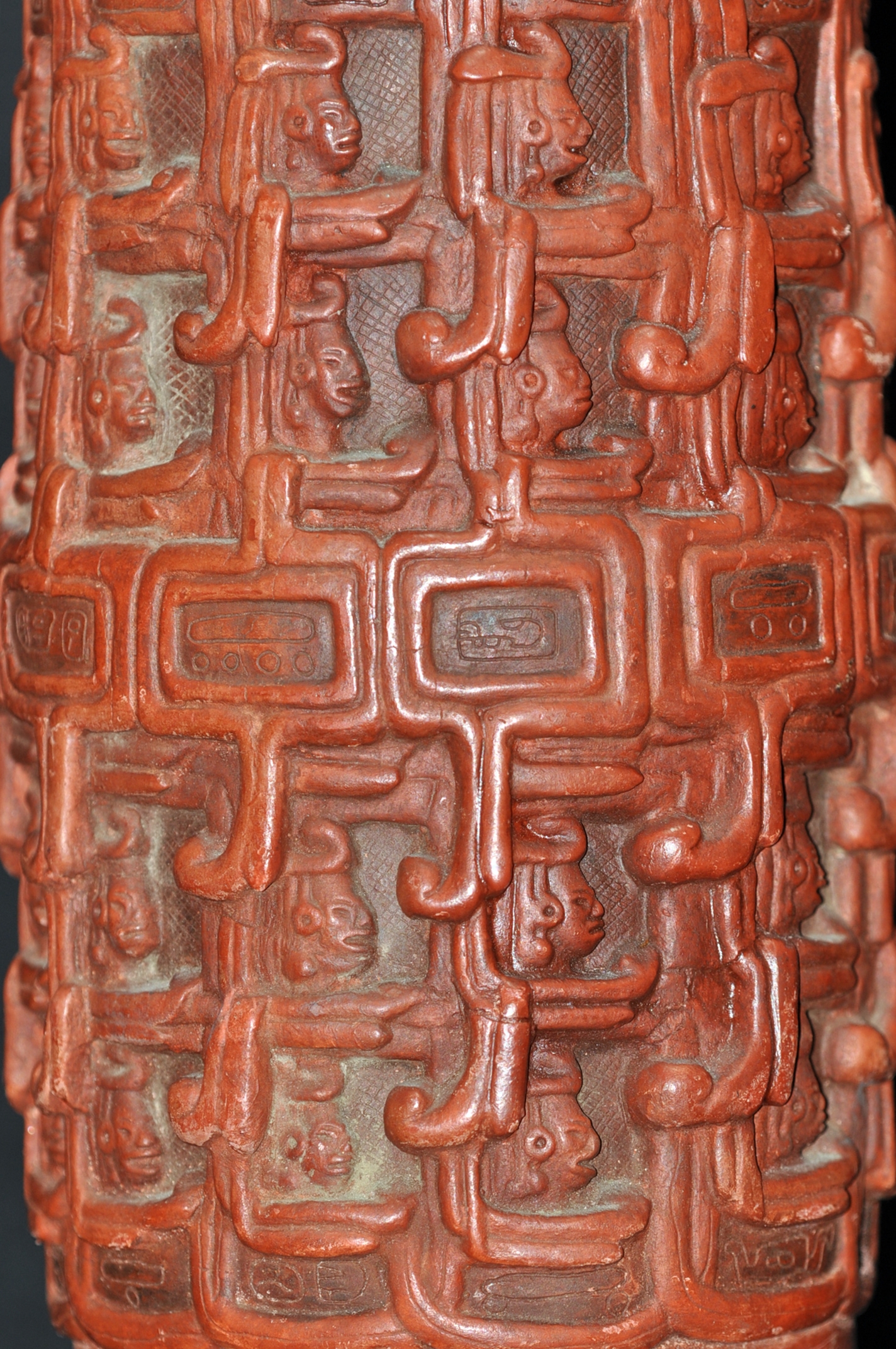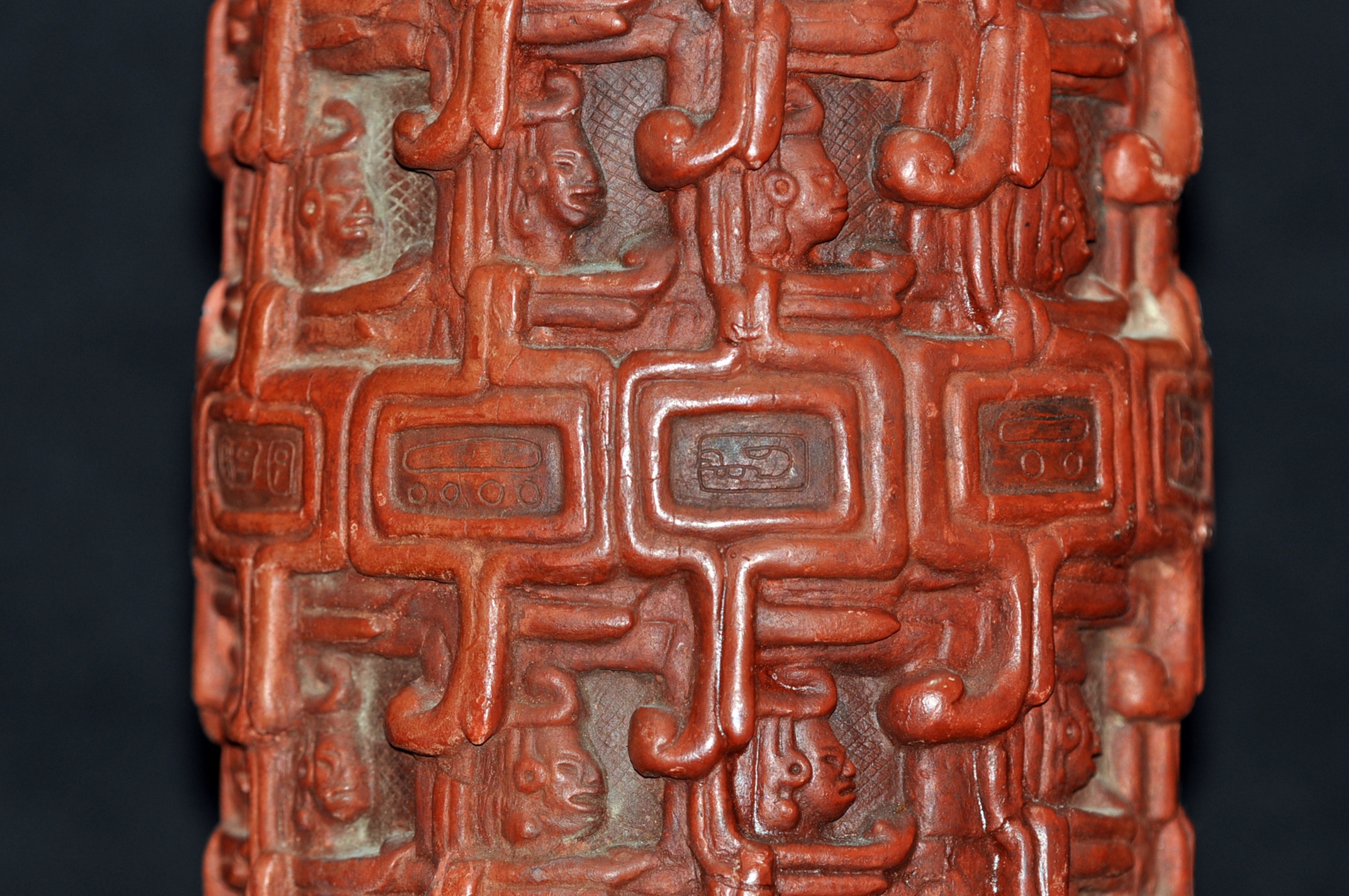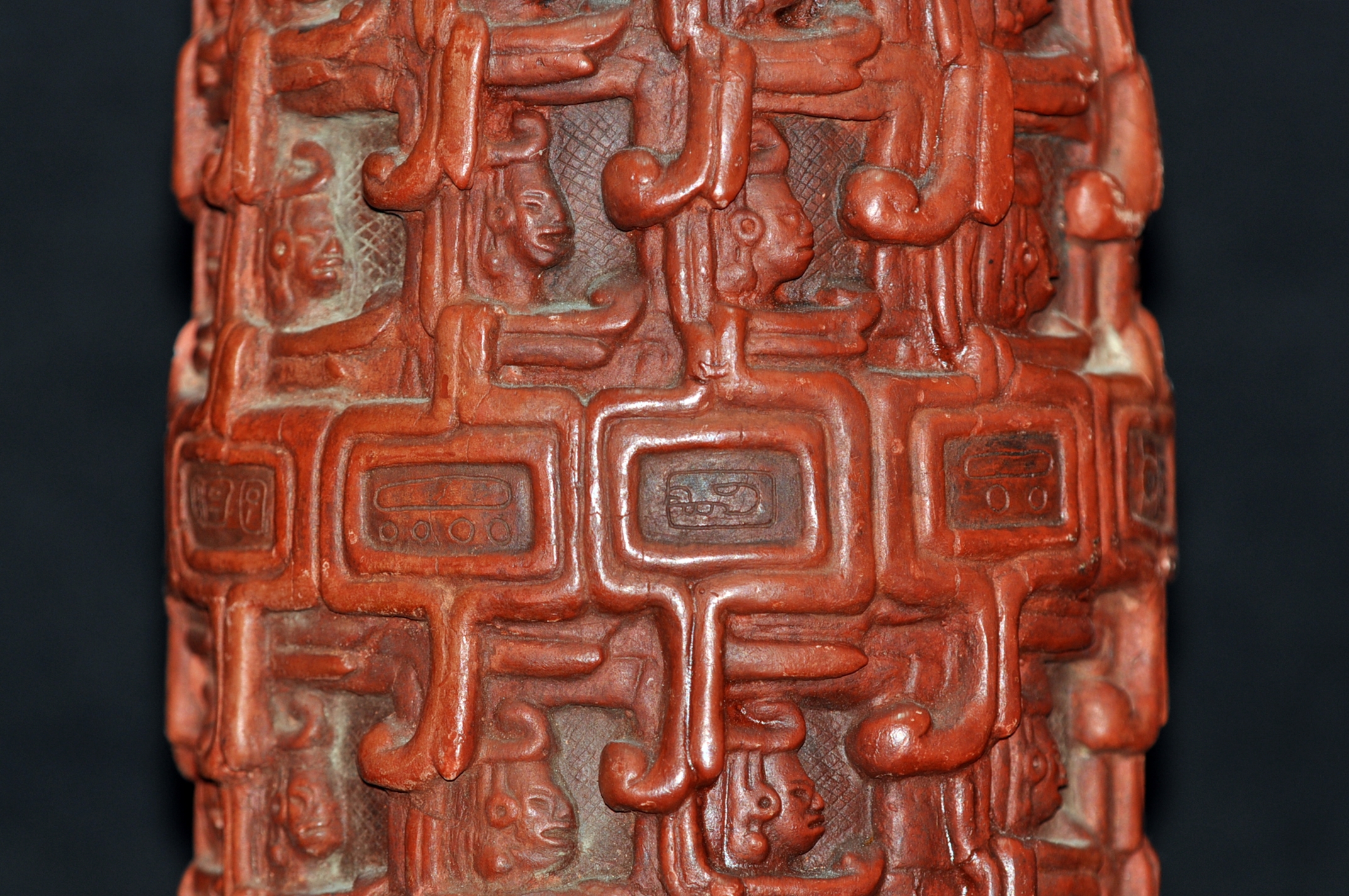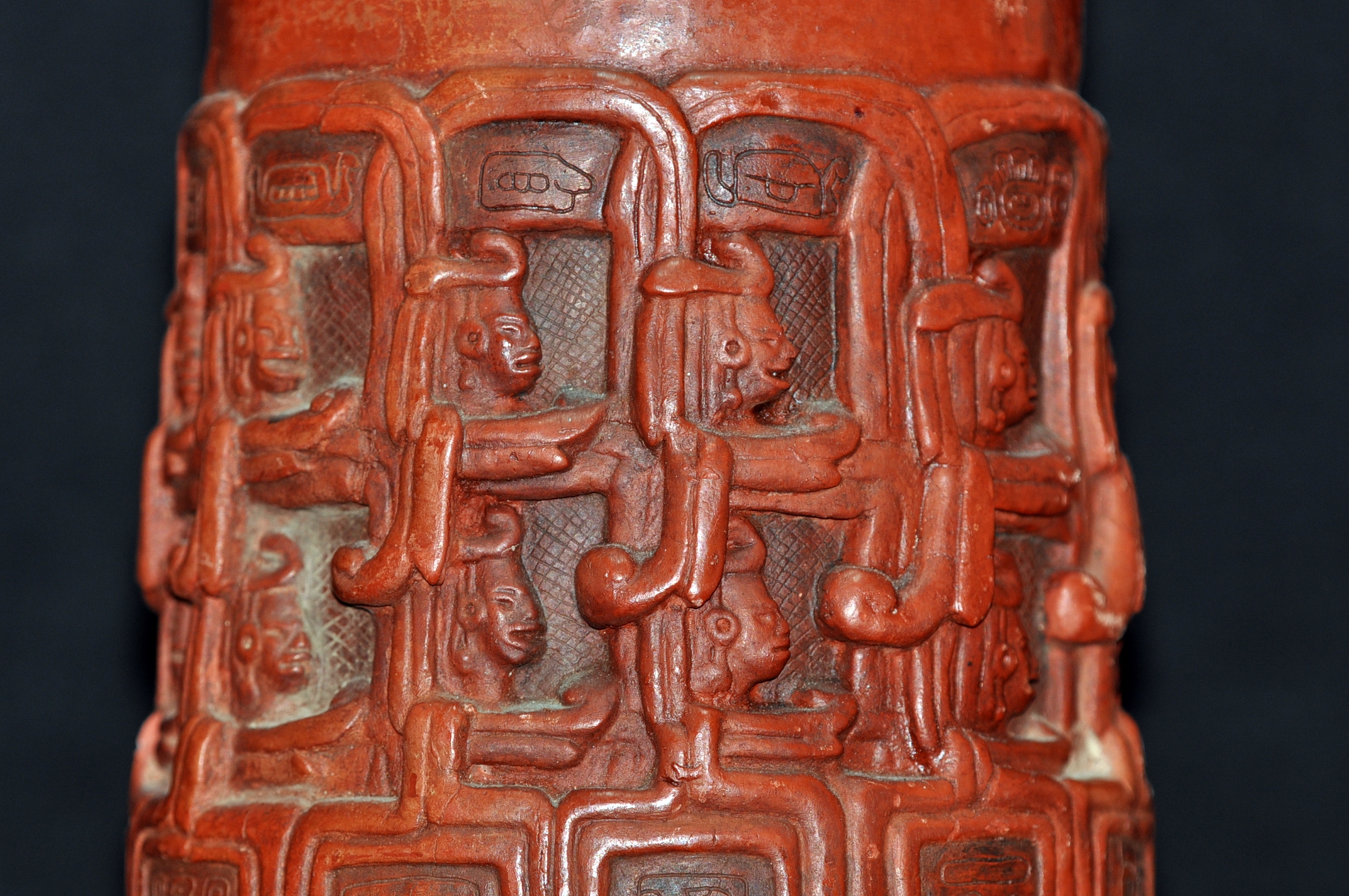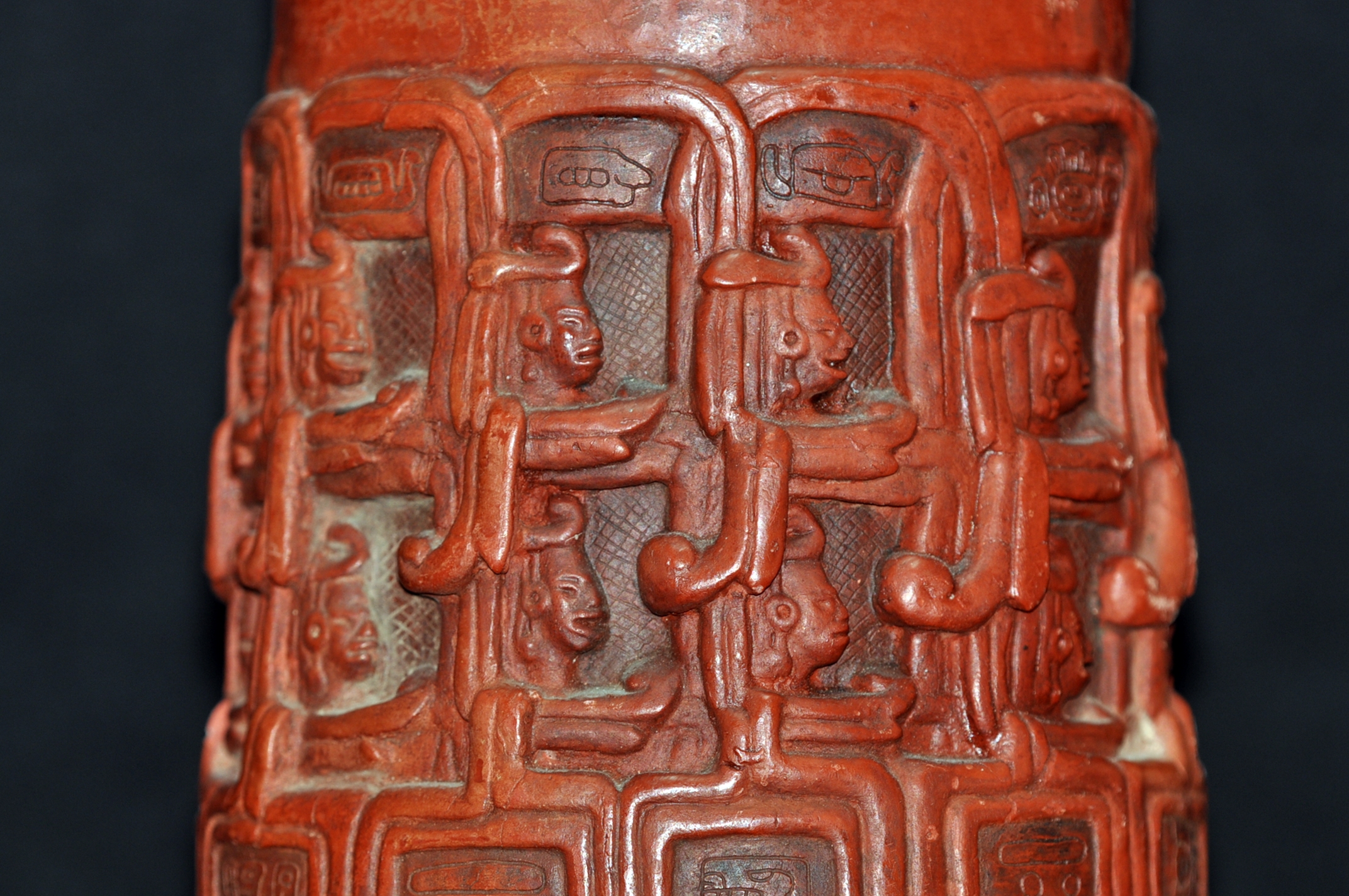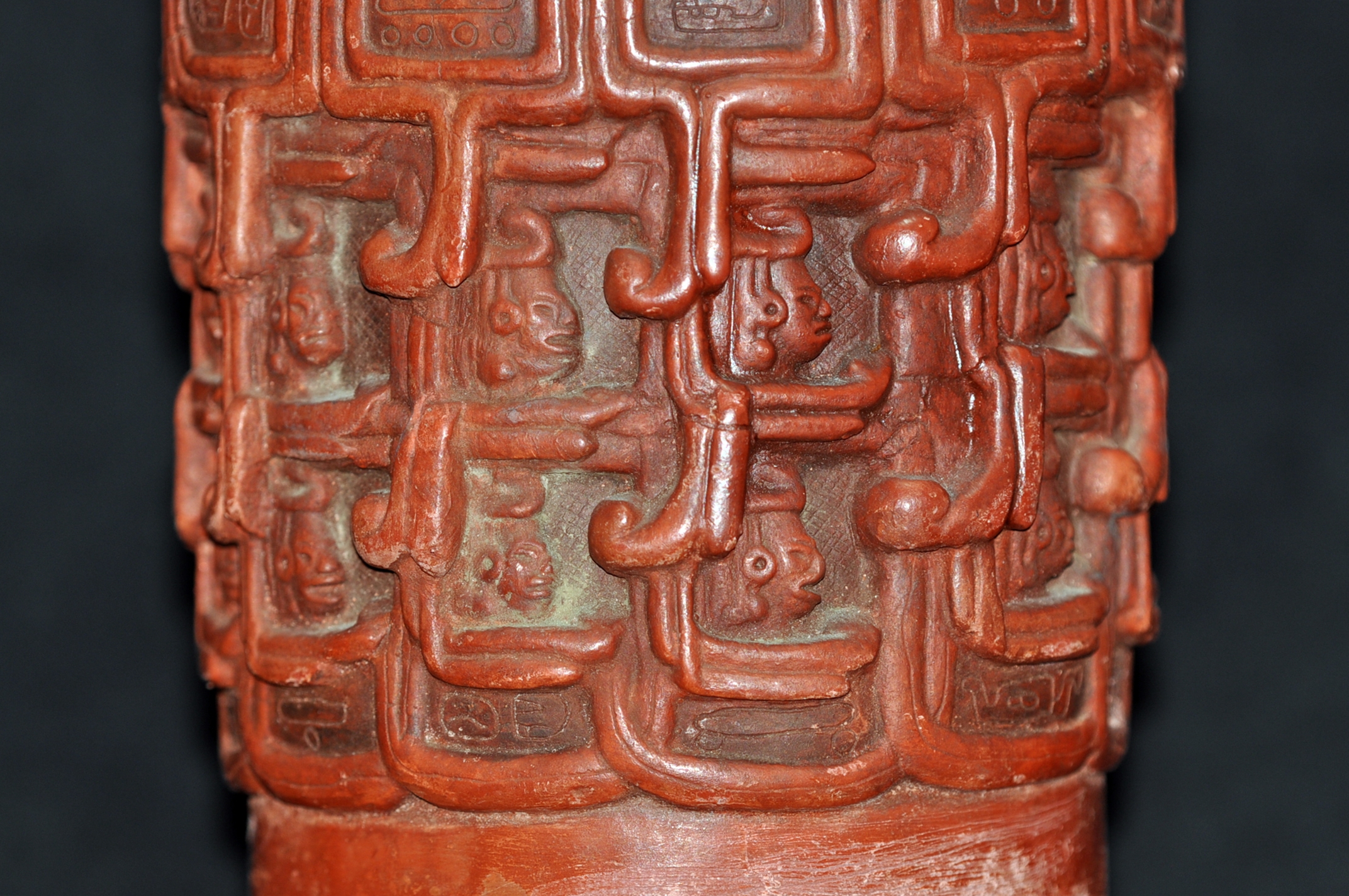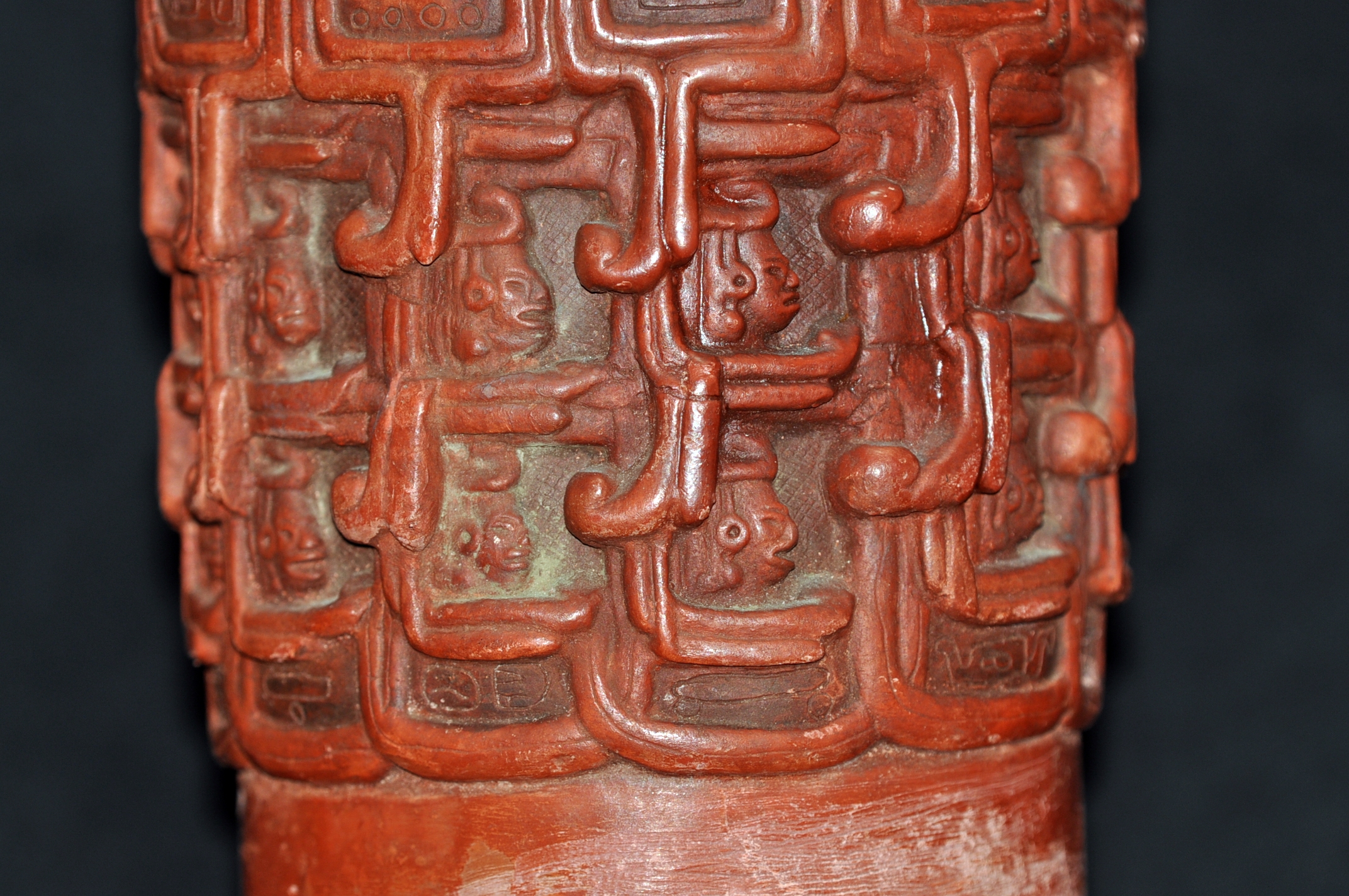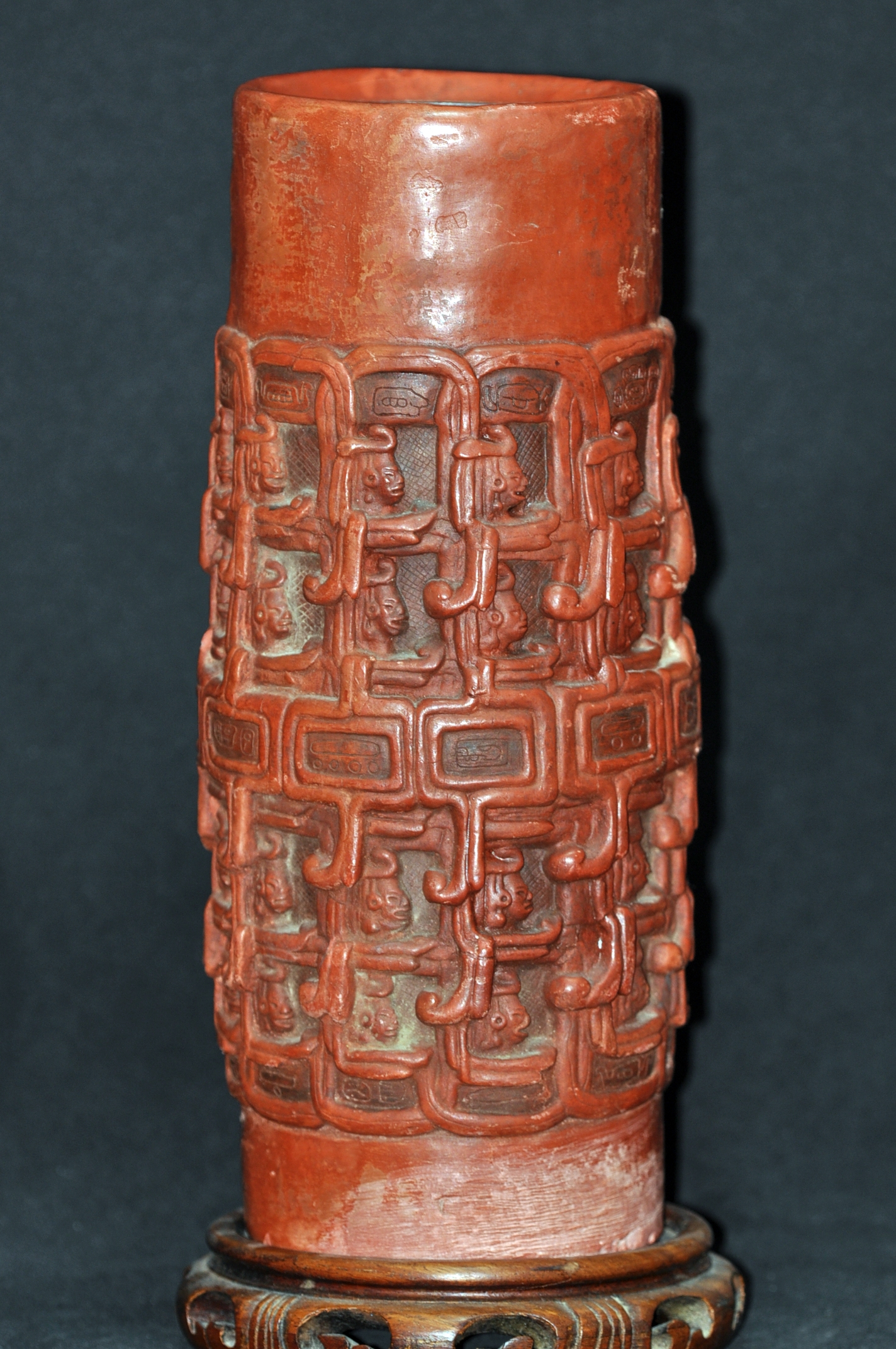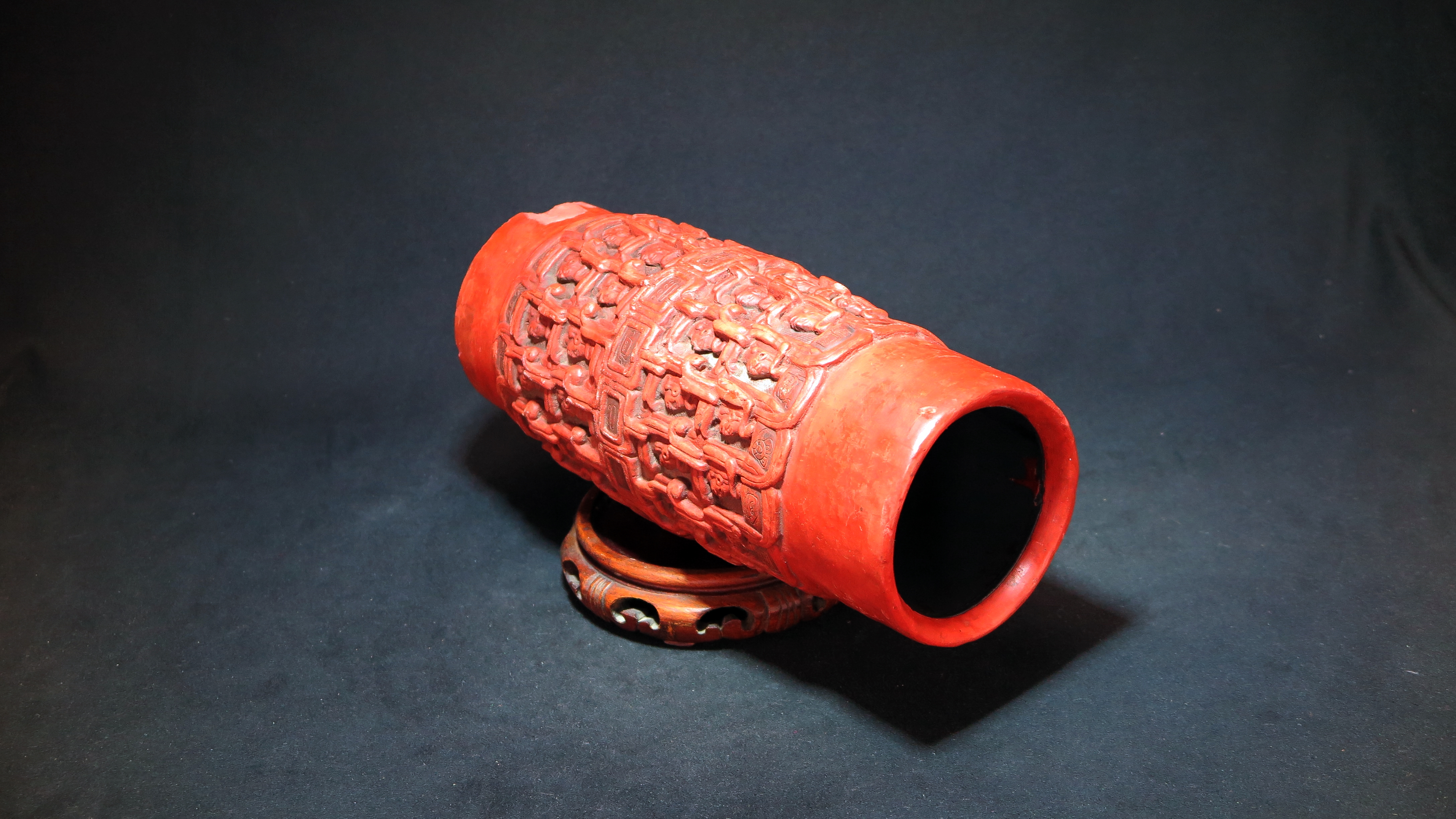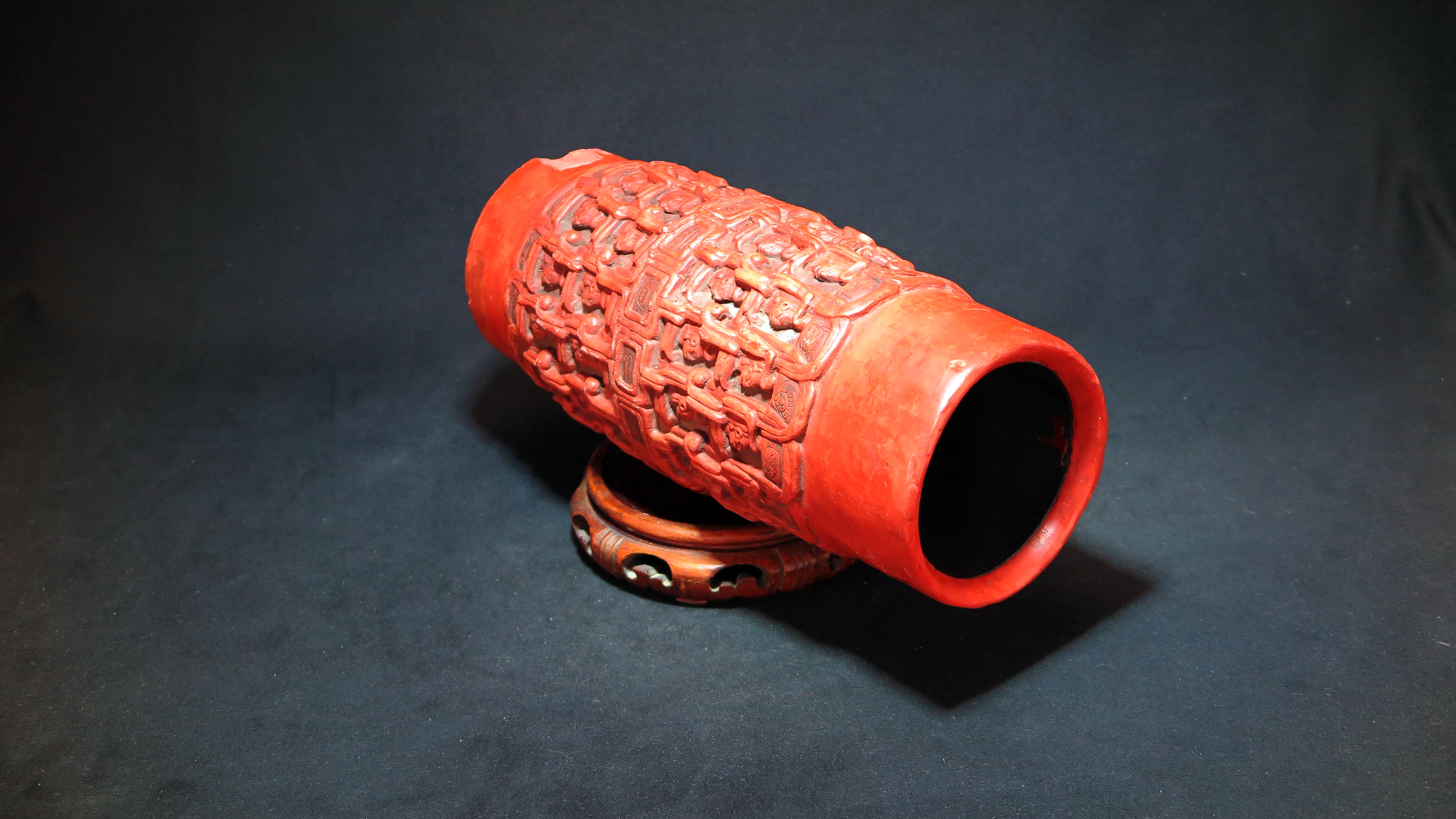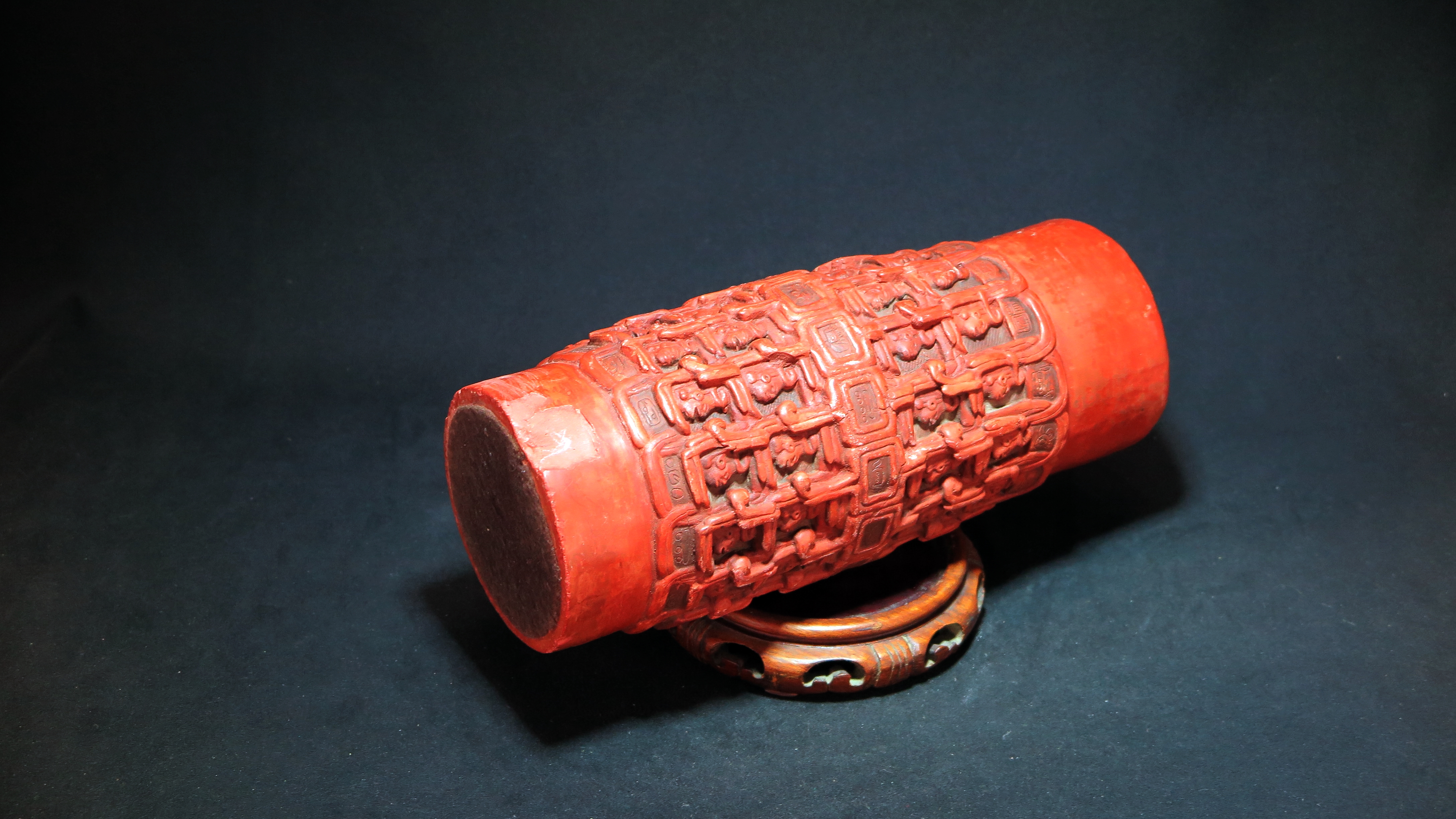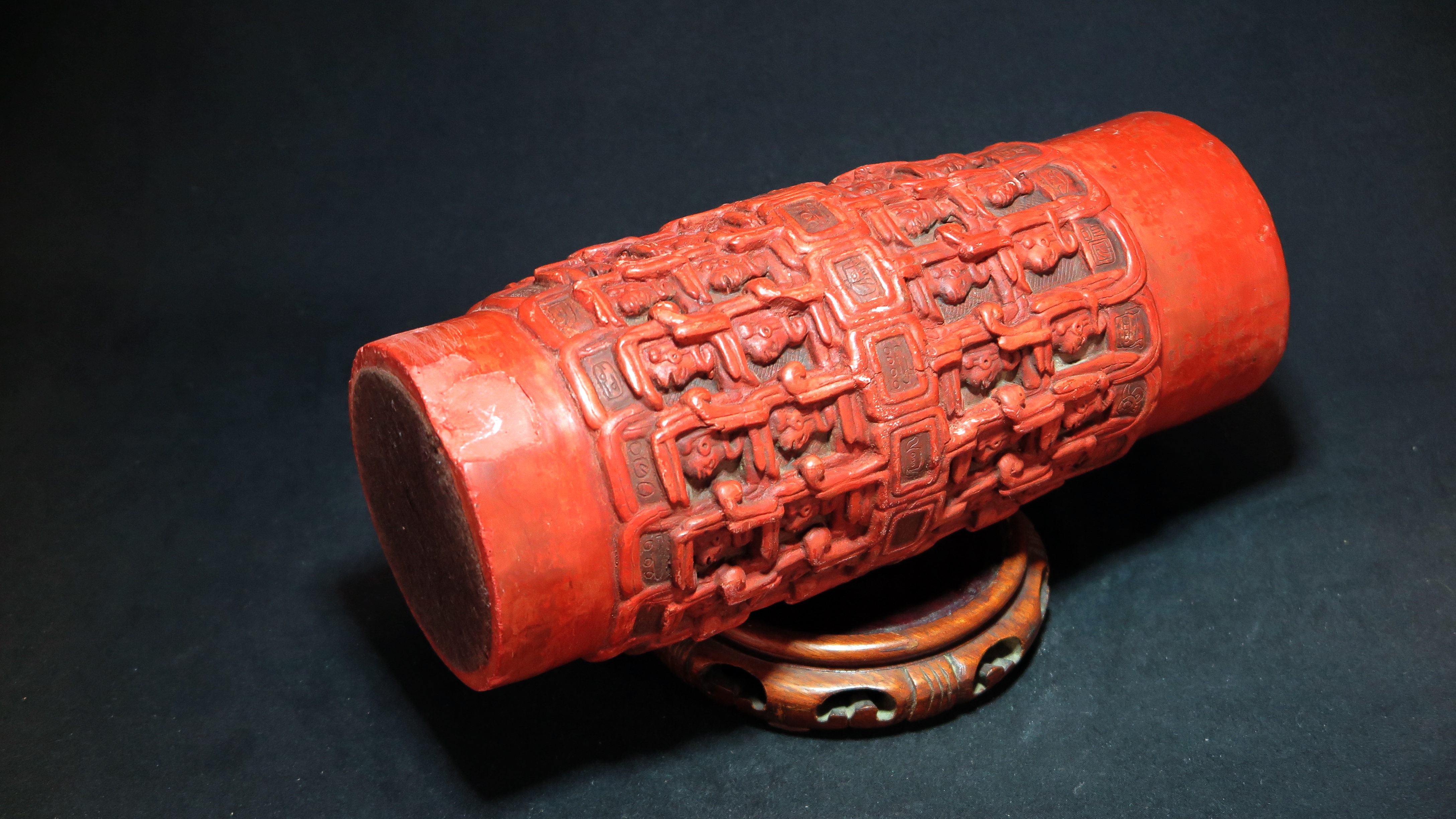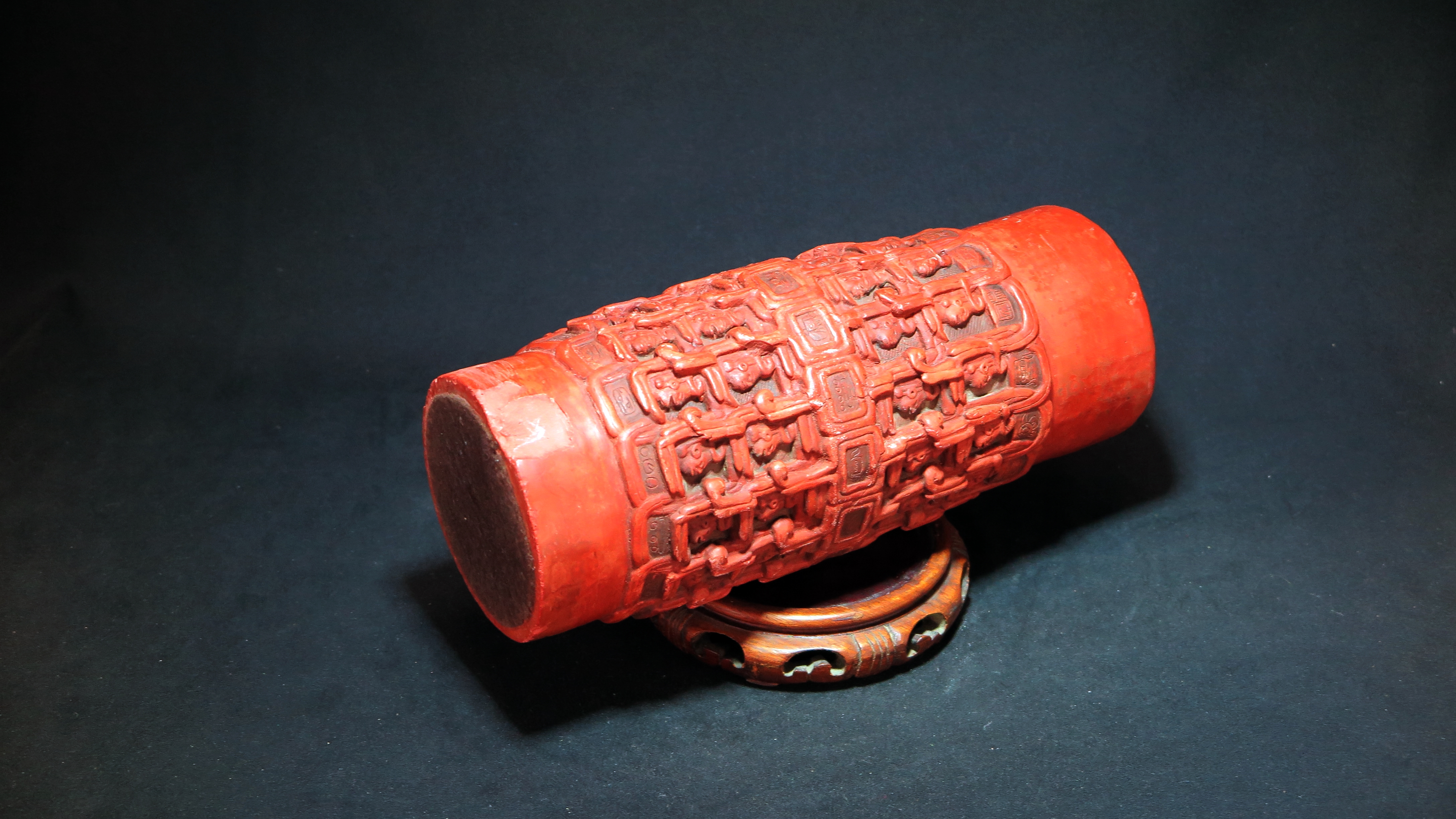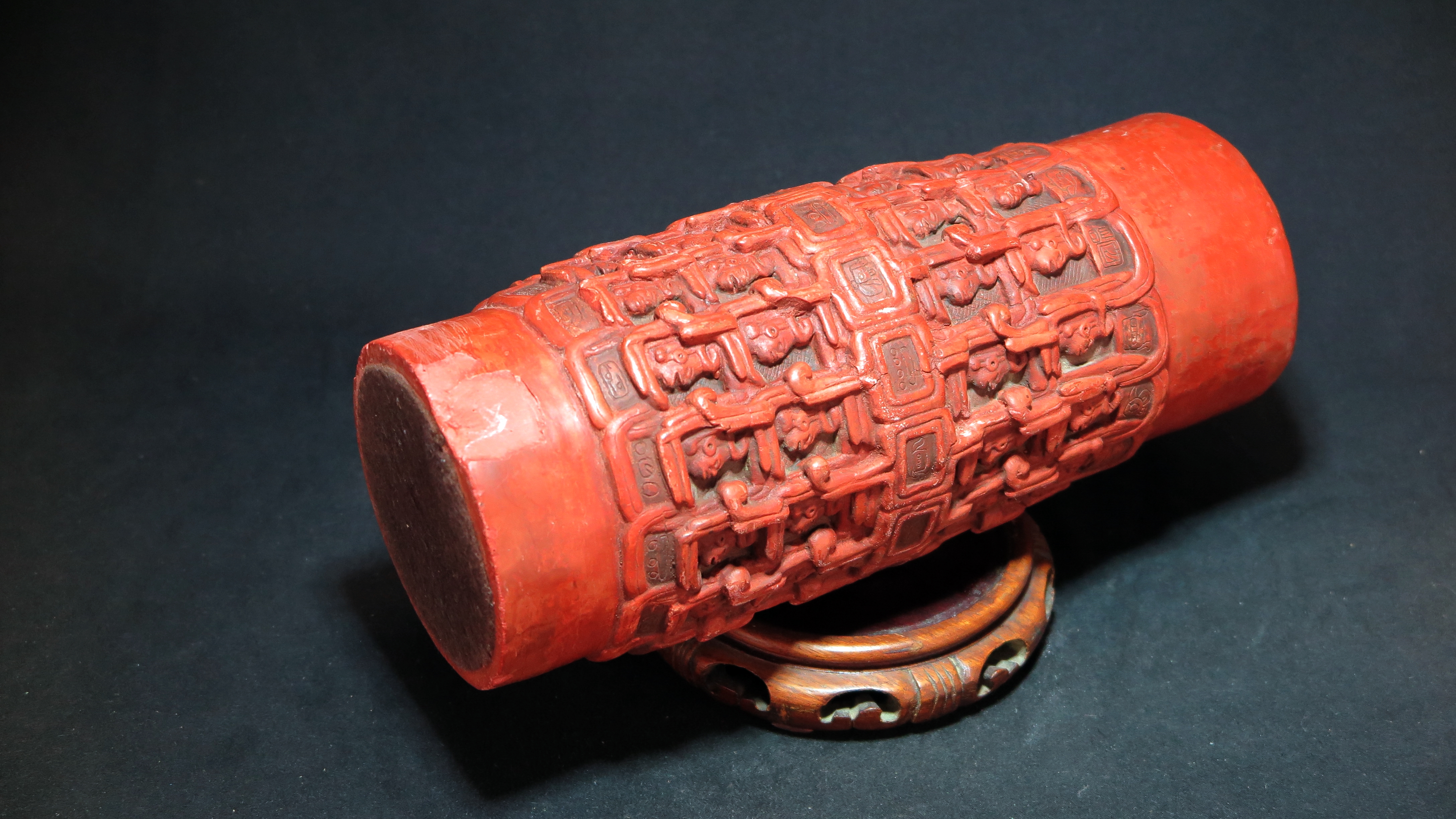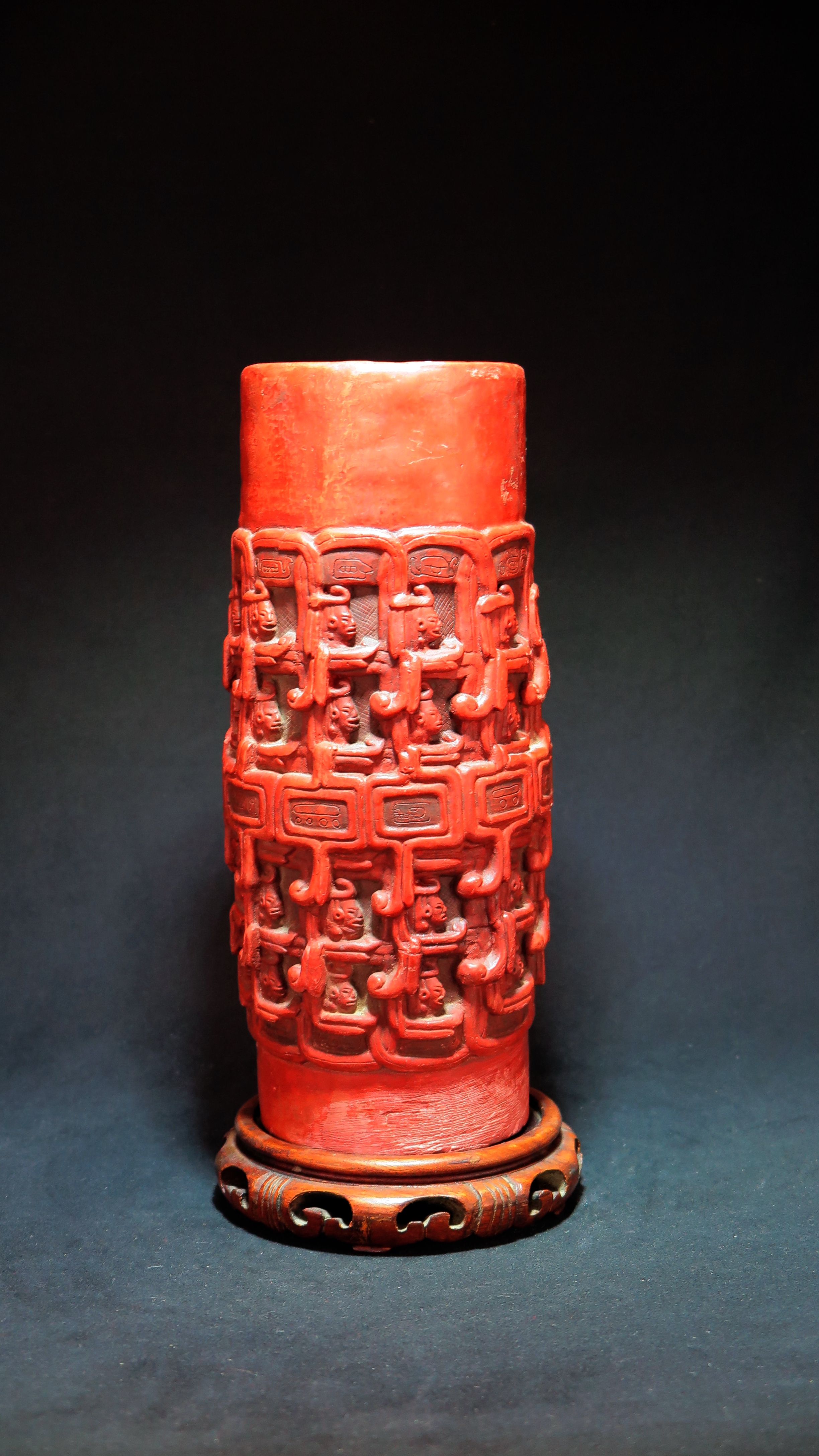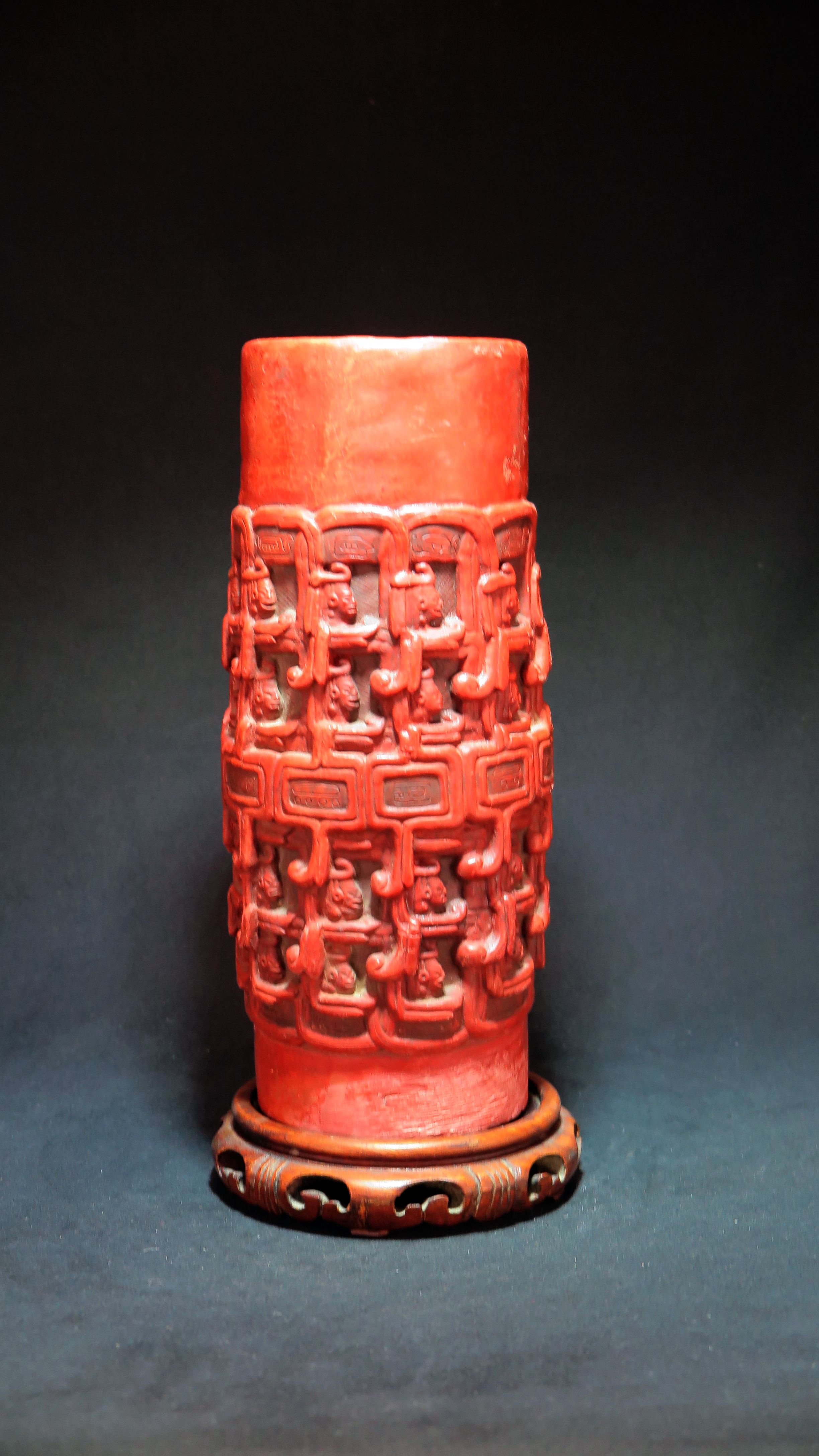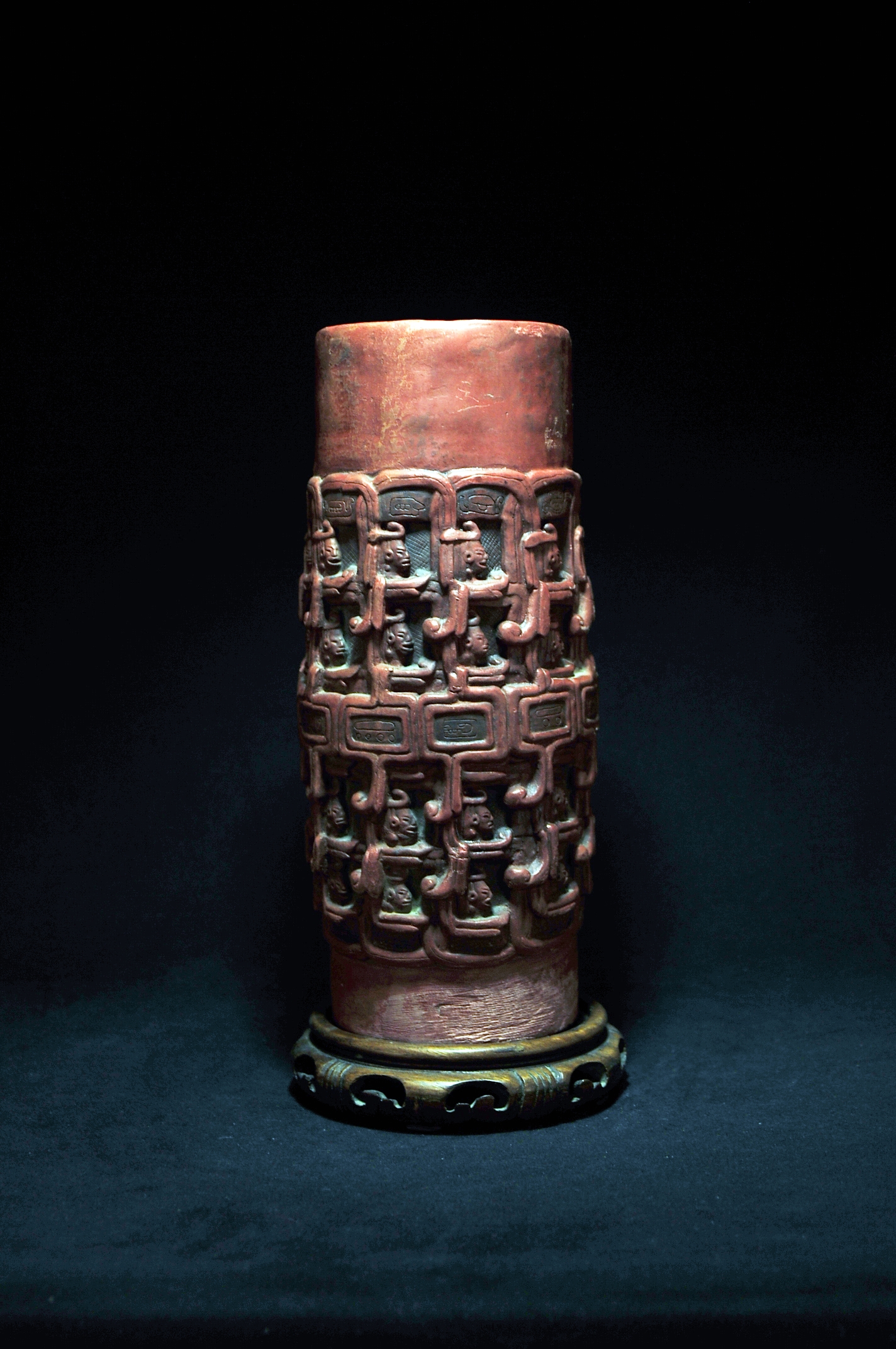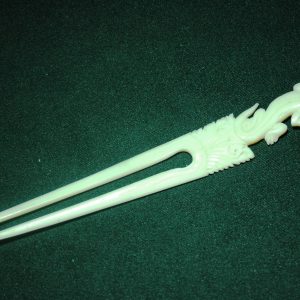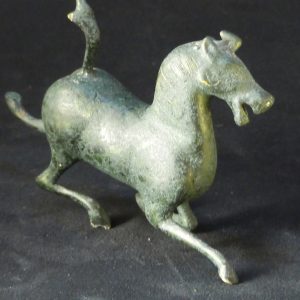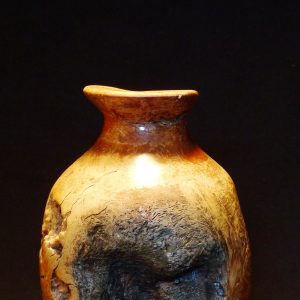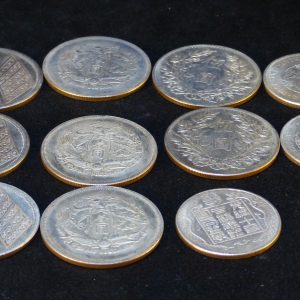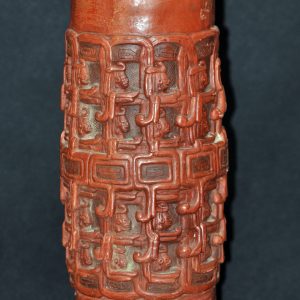Description
前哥伦比亚时期 玛雅风格 刻人物图腾纹 红陶筒瓶
Exploring the Early Americas
Vase with Eleven Figures
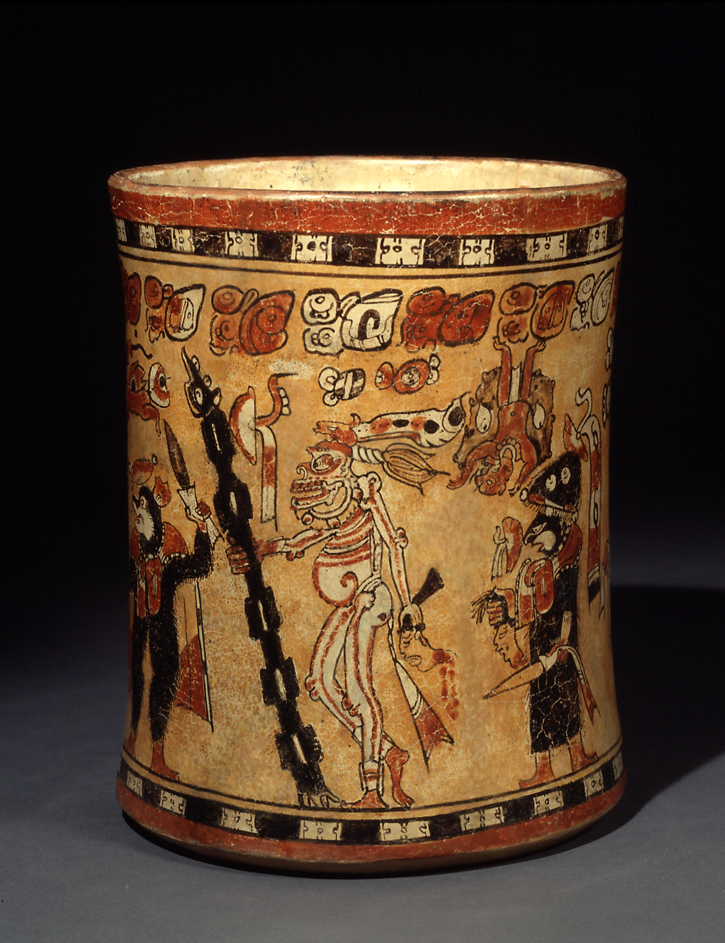
This Maya vase from the Guatemalan Highlands dates from AD 600–900, the Late Classic Maya period. Experts believed that scenes such as this represented gods from the Underworld, but recent scholarship has clarified the role of these horrific creatures as animate spells and personified illnesses sent out by sorcerers. Although glyphs appear in the rim text of this vessel, and an additional seven are in the imagery (ostensibly as captions), none are legible. Rather, these repetitious and imaginative pseudoglyphs merely convey the “idea” of writing, along with all of the attendant social status of a literate text.
參考:Bonhams
152
Fine and Rare Maya Polychrome Cacao Vase with Nobles, Retainers
and Dwarf, Late Classic, ca. A.D. 600-900
Earthenware with polychrome paint
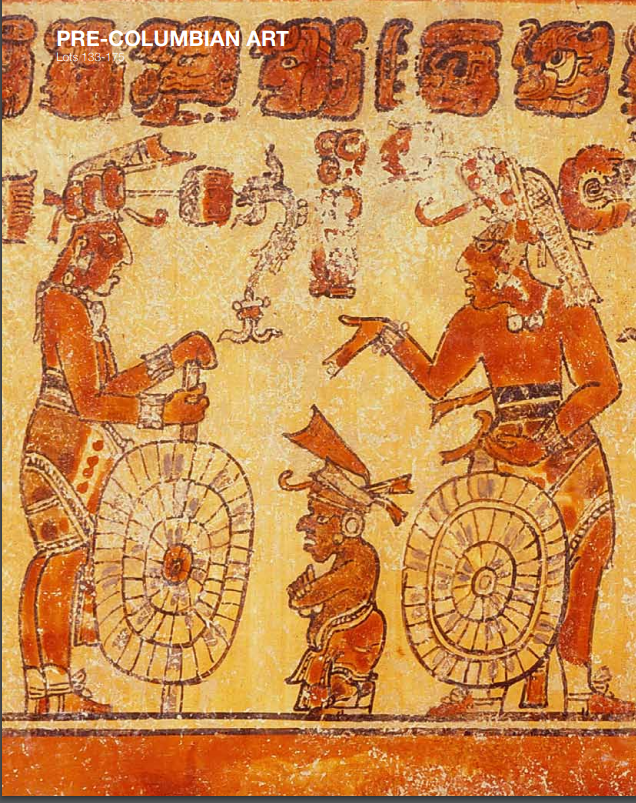
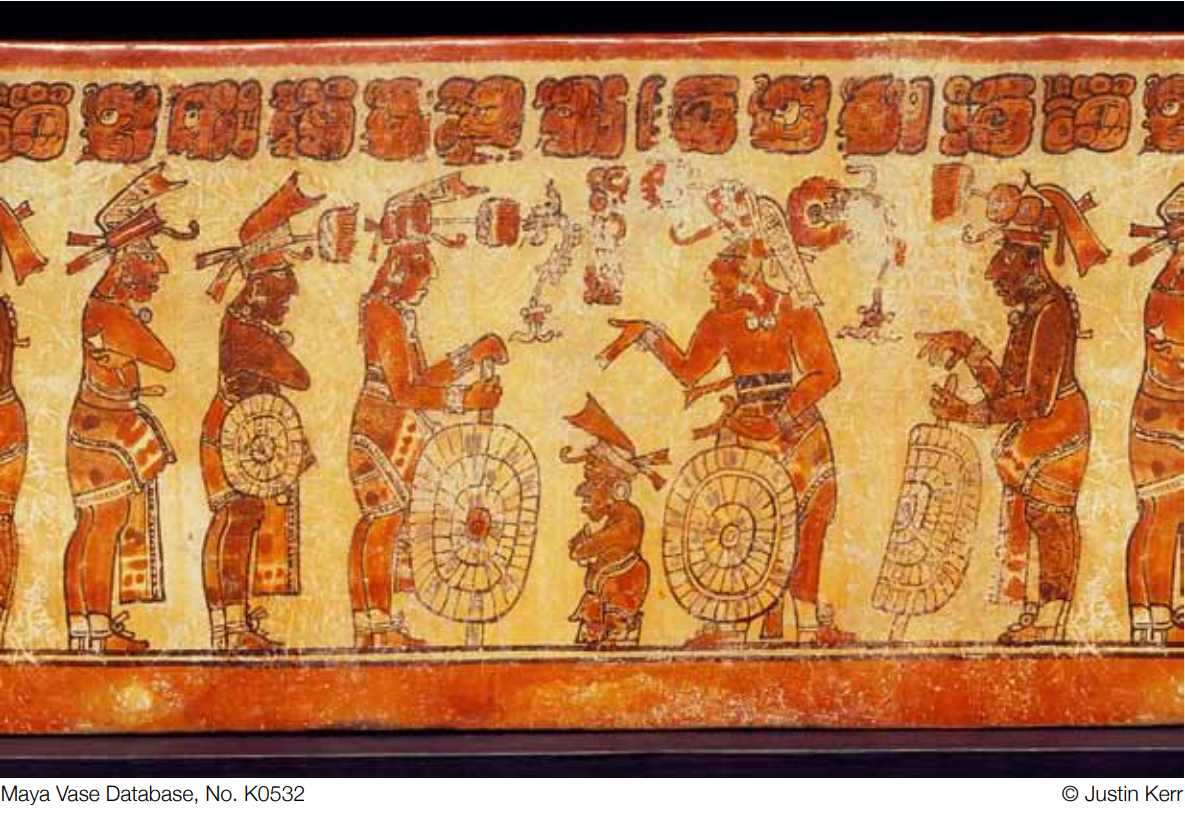
and Dwarf, Late Classic, ca. A.D. 600-900
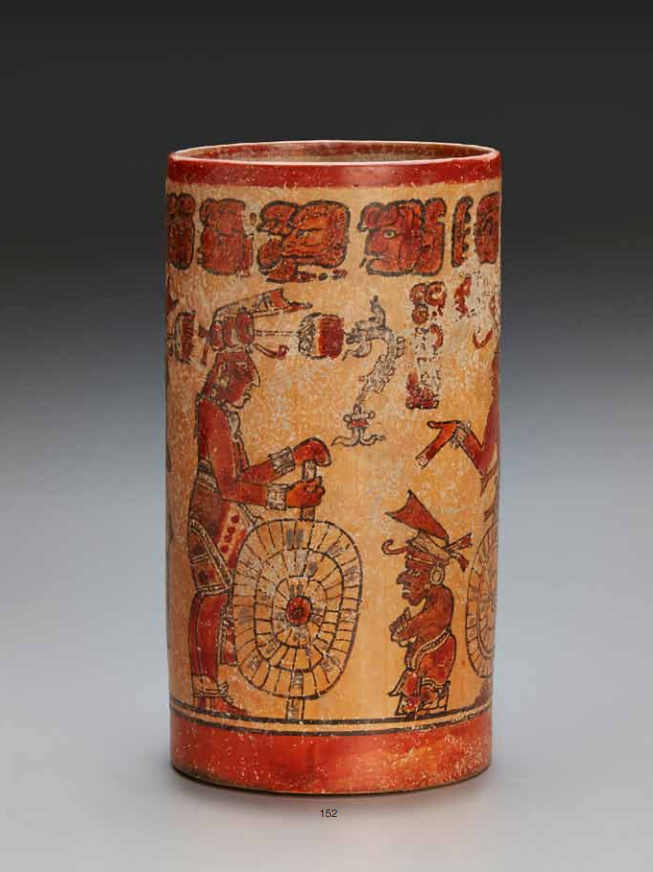
and Dwarf, Late Classic, ca. A.D. 600-900
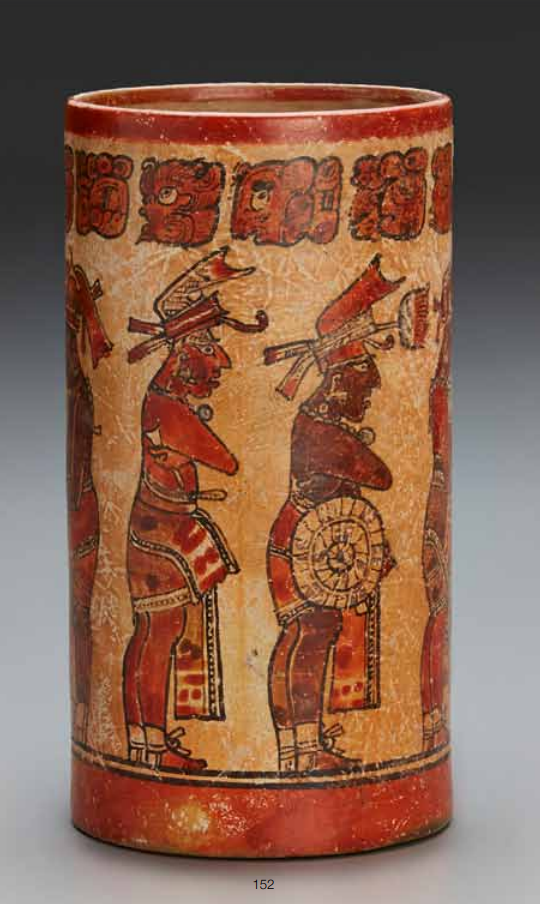
and Dwarf, Late Classic, ca. A.D. 600-900
height 10in (25.4cm)
Of tall cylindrical form superbly painted with six orange figures presented vertically on a light
orange field, two nobles facing each other and accompanied by their retainers and a dwarf, an
orange glyph band encircles the vase just below the orange-banded rim. The figures stand on
two horizontal parallel bands that rest on an orange band that extends to the base.
Provenance
Earl Stendahl, Stendahl Gallery, Los Angeles, ca. 1965-1972
Dr. Wally Zollman, Indianapolis, Indiana, 1980
Private Collection, Chicago, 1998 to present
A report on the legitimate legal ownership status by Kate Fitz Gibbon, Esq. accompanies the work.
Published
Lee Parsons, John B. Carlson and Peter David Joralemon, The Face of Ancient America:
The Wally and Brenda Zollman Collection of Pre-Columbian Art, Indianapolis Museum of
Art, 1988, fig. 69
Kerr, Justin, The Maya Vase Book: A Corpus of Rollout Photographs of Maya Vases, Vol.
1: 1998: 18
“This tall, slender late Classic Maya polychrome cylinder presents a scene with six standing figures: two nobles meeting face to face accompanied by their retainers and a dwarf companion. The three secondary dignitaries are all dressed similarly and are probably of roughly equal rank. The two lords carry large fans, as does one of the retainers.
All are bare-chested with relatively modest hemmed loincloths, the normal everyday attire in the hot tropical lowlands. The two nobles who face each other have the most elaborate headdresses, with cloth turbans and water
lilies with ornate fish nibbling at the flowers, a common Maya emblem of rank. A three-glyph secondary text falls vertically between them and probably records the essence of their exchange. The secondary figures wear cloth turbans indicative of the lesser rand of cahal.
The hieroglyphic text of eleven glyph blocks at the top is painted in the same colors as the body of the vessel, shades of red to brown with black outline on a cream slip background. It is a Primary Standard Sequence (Coe 1973), which begins with the initial glyph above the water lily headdress of the lord standing to the left of the dwarf.
It describes the vessel and its contents, which in this case are the seeds of cacao or chocolate. These two glyphs may be seen on the photograph of the cylinder as well as on the rollout above the heads of the secondary
officials, which are back to back. The glyph block on the left has been read phonetically by Barbara McLeod (1988, personal communication) as ta yu tal, meaning “from the seeds of.” The profile stylized fish face to
the right is the Maya “head variant” of cacao.”
(Parsons, 1988, p. 102)
$70,000 – 90,000
參考:Bonhams
African, Oceanic and Pre-Columbian Art
15 May 2014
New York 183
Maya Polychrome Vase depicting the Water
Serpent,
Late Classic, ca. A.D. 550 – 950
Earthenware with polychrome slip
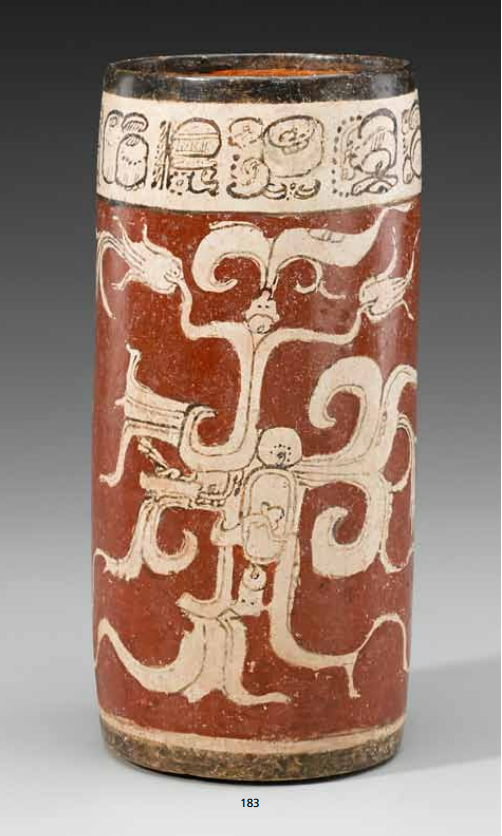
Serpent,
height 7in (18cm)
PROVENANCE
Private Collection, Chicago, Illinois, acquired in the 1960s or earlier Robert and Marianne Huber, Chicago, Illinois Private Collection, Chicago, Illinois Kerr Maya Vase Database No. 8728
THE MAYA WATER SERPENT VASE
The image likely portrays a version of the water serpent, which functions in Maya art as an examplar (symbolic rendering) of a mythic place.
Typically, the water serpent is depicted with a waterlily pad tied atop its head, a down-turned snout, and rising from a skull. There are myriad versions of the water serpent, however, each of which serves a specific narrative function. Some are the names of supernatural locales, which often have their counterparts on earth such as Matwiil, the mythical “Place of Waterbirds” mentioned in the hieroglyphic texts at Palenque.
The Group of the Cross replicates this place, and in the Tablet of the Cross the deceased ruler Pakal stands on a version of Matwiil (rendered as a shell with foliage emerging from it).
The version on this vase belongs to a subgroup nicknamed the “waterlily creature,” a recurring iconic form within the broader water serpent complex. Note the two waterlily flowers and the bifurcated scrolls that likely refer to gently flowing water. The waterlily creature personifies the hieroglyph for nahb, “pool [of water]” or “waterlily.” Here the “sprouting ajaw” icon indicates the divine nature of this image.
The vase was made in an elite pottery workshop at/near Xultún, Guatemala (see the Maya Vase Database K4572, K5366, K6882, K8007, and K9153). The latter was painted by the same artist who produced vessels for members of the site’s nobility such as the man named here at the end of the PSS text.
Dorie Reents-Budet, Ph.D.
$10,000 – 15,000
REF. 美国大都会博物馆 玛雅红瓷土 筒瓶: Cylindrical Vessel
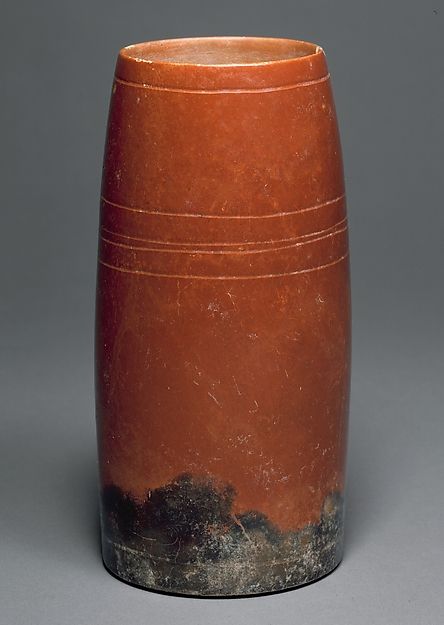
Geography: Guatemala, Mesoamerica
Culture: Maya
Medium: Ceramic
Dimensions: H. 7 7/8 in. (20 cm)
Classification: Ceramics-Containers
Credit Line: Gift of Arthur M. Bullowa, 1982
Accession Number: 1982.207.7
Description
The simple elegance of this vessel belies the complex skills needed to achieve the delicate “fire-clouding” that adorns the base. The contrasting red and black fields evoke nothing so much as the fires from which the vessel emerged, a smooth flame rising from coarse coals. The incised lines around the circumference mark different zones, which in later times become fields for pictorial and hieroglyphic information. The overall sophistication of the vessel indicates probable use in royal rituals, but the unusual tapered, cylindrical shape says little about its precise function.
Provenance
Arthur M. Bullowa, New York, until 1982
References
Jones, Julie, Susan Mullin Vogel, and Kate Ezra. Notable Acquisitions (Metropolitan Museum of Art) (1982–1983), pp. 73–77.
Timeline of Art History (2000-present)
Timelines
Maya Area, 1–500A.D.
美国大都会博物馆 玛雅红瓷土 筒瓶2: Cylindrical Vessel
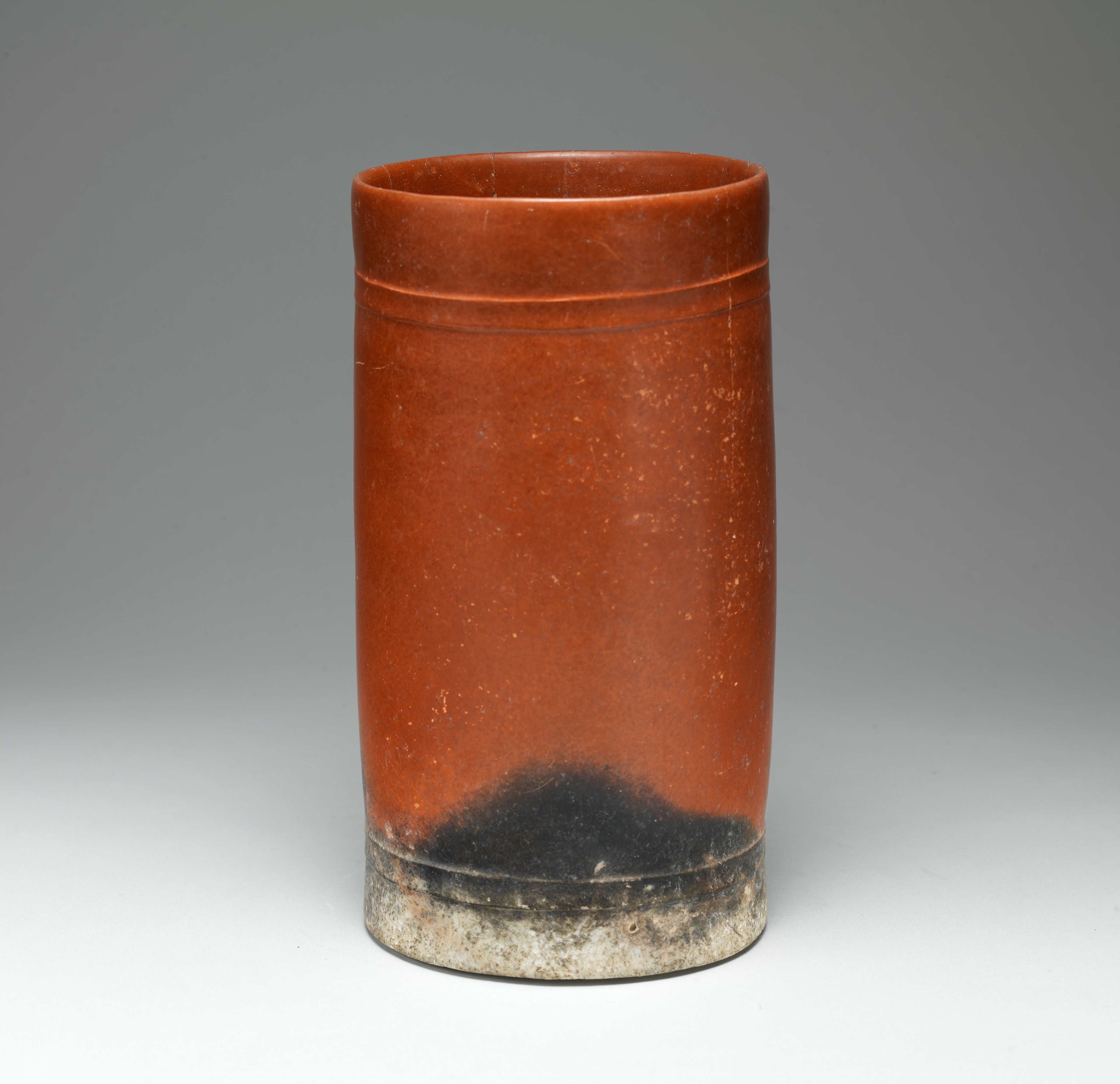
Date:1st–2nd century
Geography:Guatemala, Mesoamerica
Culture:Maya
Medium:Ceramic
Dimensions:H. 10 in. (25.4 cm)
Classification:Ceramics-Containers
Credit Line:Gift of Arthur M. Bullowa, 1989
Accession Number:1989.314.16
REF. 美国大都会博物馆 玛雅红瓷土 四足碗: : Tetrapod Bowl
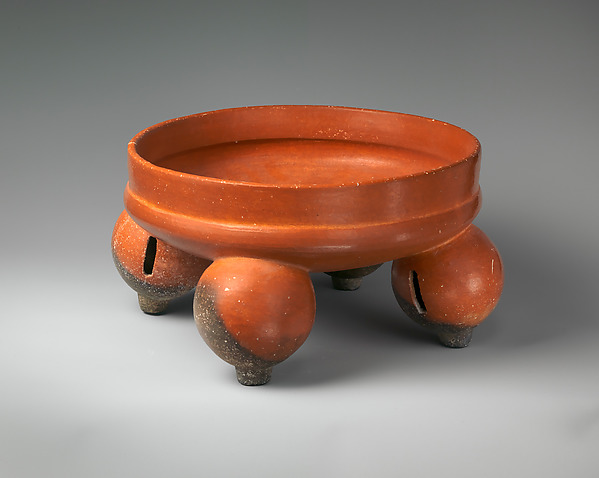
Date:1st–4th century
Geography:Guatemala, Mesoamerica
Culture:Maya
Medium:Ceramic
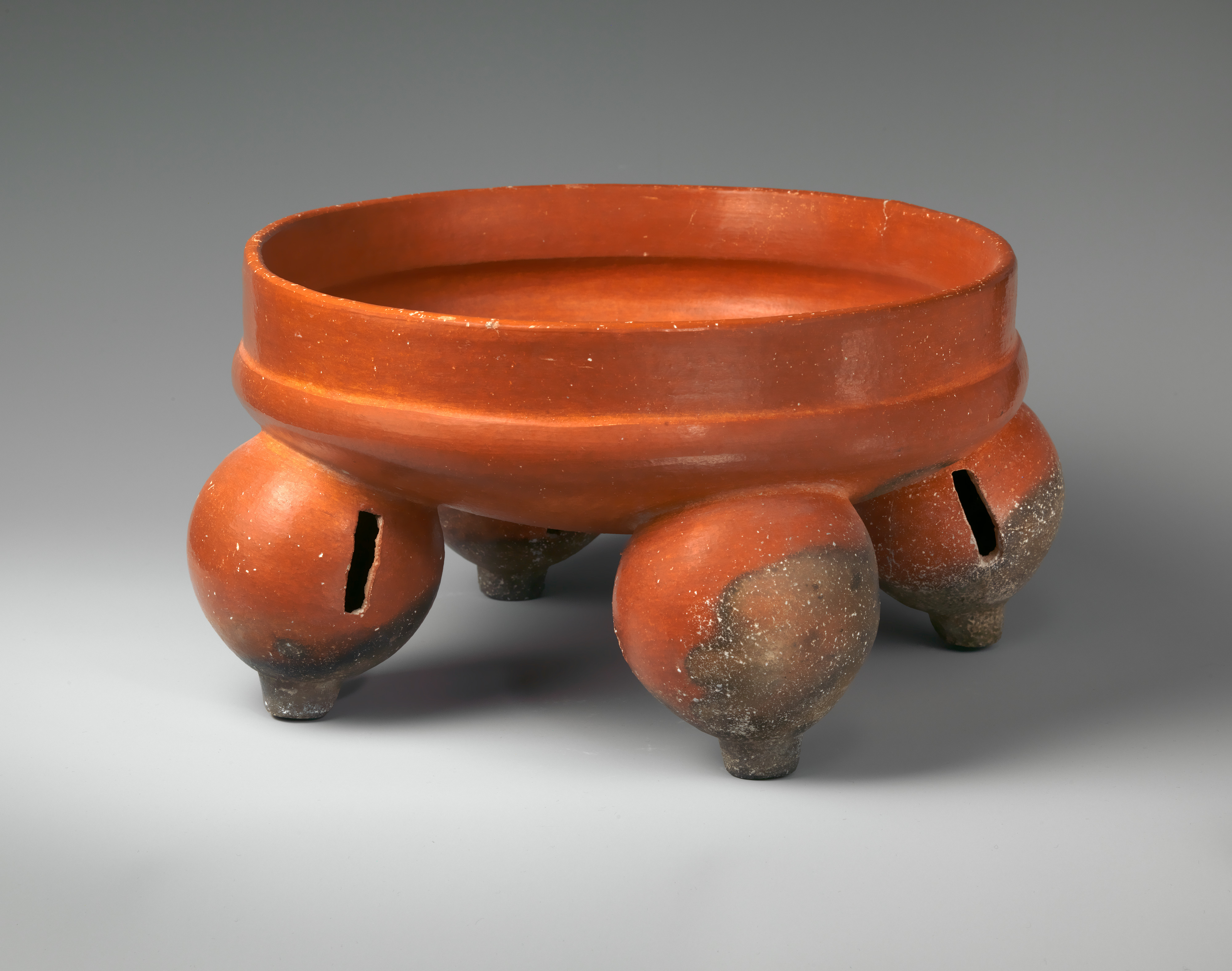
Date:1st–4th century
Geography:Guatemala, Mesoamerica
Culture:Maya
Medium:Ceramic
Tetrapod Bowl
Date:1st–4th century
Geography:Guatemala, Mesoamerica
Culture:Maya
Medium:Ceramic
Dimensions:H. 5 1/2 in. (14 cm)
Classification:Ceramics-Containers
Credit Line:Gift of Arthur M. Bullowa, 1982
Accession Number:1982.207.1
On view at The Met Fifth Avenue in Gallery 358
Wide-mouthed bowls or plates are believed to have been used as presentation or serving vessels. Those raised on four bulbous feet are identified with the Maya lowlands of Mexico and Guatemala in the earliest centuries A.D. and include a rather showy type surfaced with an arresting, bright orange-red slip, as seen here. The surface is continuous, even, and smooth in color; the shape is clean lined and well balanced. This type of vessel represents a considerable display of proficiency in the art and technique of the potter and was valued as a precious object at the time of manufacture. Other ceramics of specialized shape and size were finished with the same orange-red surface color. Perhaps suites of similarly hued ceramic containers were particularly meaningful together. This example has dark gray firing-clouds on the bottom of the feet, the only change in color from smooth orange-red on the vessel.
Provenance
Arthur M. Bullowa, New York, until 1982
Timeline of Art History (2000-present)
Timelines
Maya Area, 1–500A.D.
REF. 美国大都会博物馆 玛雅红瓷土 绘神话人物纹罐: : Vessel with Deity Figures
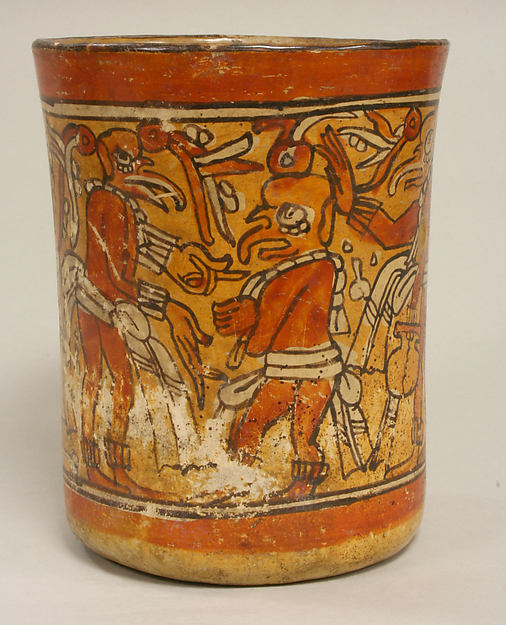
Date:7th–8th century
Geography:Guatemala or Mexico, Mesoamerica
Culture:Maya
Medium:Ceramic
Dimensions:H. 7 11/16 x Diam. 6 1/4 in. (19.5 x 15.9 cm)
Classification:Ceramics-Containers
Credit Line:The Michael C. Rockefeller Memorial Collection, Bequest of Nelson A. Rockefeller, 1979
Accession Number:1979.206.1122
Not on view
Provenance
[Ralph C. Altman, Los Angeles, until 1964]; Nelson A. Rockefeller, New York, 1964, on loan to The Museum of Primitive Art, New York, 1964–1978
References
The Metropolitan Museum of Art. Art of Oceania, Africa, and the Americas from the Museum of Primitive Art. New York: The Metropolitan Museum of Art, 1969, no. 619.
Timeline of Art History (2000-present)
Timelines
Maya Area, 500–1000 A.D.
Keyword: Americas,Central America,Ceramic,Guatemala,Maya Art,Mesoamerican Art,Precolumbian Art,Vessel,1st Century A.D.,2nd Century A.D.

![[临渊阁]天地一家春](https://www.antiquekeeper.ca/wp-content/uploads/2023/04/BW-Erping-1a-17-6-1.jpg)
